Contents:
|
|
|
|
NORSOK
D-010, "Well integrity in drilling and well operations", revision 5, December 2021
|
Comprehensive discussion of barrier systems in wells. Developed
and published by Norwegian standards bodies.
"This standard defines requirements and guidelines relating to well integrity in
drilling and well activities. Well integrity is defined to be “application of technical,
operational and organizational solutions to reduce risk of uncontrolled release
of formation fluids throughout the life cycle of a well”. The standard focuses on
establishing well barriers by use of WBE’s (well barrier elements), their acceptance
criteria, their use and monitoring of integrity during their life cycle. The standard
also covers well integrity management and personnel competence requirements. The
standard does not contain any well or rig equipment specifications."
|
"Recommended
Guidelines for Well Integrity"
Developed by the OLF, Norwegian Oil ad Gas Association
|
The OLF (Oljeindustriens Landsforening, the Norwegian Oil Industry Association)
through the WIF (Well Integrity Forum) working group, have prepared this document
to assist in design of well integrity management systems.
|
ISO TS 16530-2: "Well Integrity for the Operational Phase"
Under Development
|
The purpose of the standard is to fill the gap that currently exists in the oil
& gas industry for safety systems specifications for offshore and subsea addressed
in API 14 A/B/D, annulus pressure management standard API 90 and Norksok D-010.
These do not address low complexity / exposure for onshore wells, or provide acceptance
criteria or guidance on maintaining the overall well operating envelope over its
lifecycle. A well integrity standard for the operational phase, that provides guidance
how to manage well integrity, based on risk to the surrounding environment and outflow
potential, with associated guidance on test / acceptance criteria is a pre-requisite
for oil and gas industry to maintain its licence to operate.
|
"Well Integrity Guidelines", Issue 1, July 2012
Developed by Oil & Gas UK
|
These guidelines were written by the Well Life Cycle Integrity Guidelines workgroup of the Well Life Cycle Practices Forum. The guidelines are relevant to all wells and well operations in the UK for the extraction of naturally occurring hydrocarbons. The guidelines describe what is believed to be good industry practice and refer to relevant legislation, standards and practices. The guidelines concentrate on “typical” wells and “standard” operations.
|
|
API/ISO Documents - these documents can be downloaded from the
API web site, ISO web site or from the IHS web site.
|
|
Free access to API safety and cited
documents
|
The purpose of this site is to provide the public with access to key industry standards,
particularly those standards that are safety-related or have been incorporated into
federal regulation. Please use this site to review standards related to process
safety, refinery and chemical plant operations and equipment, offshore drilling,
hydraulic fracturing and well construction, and pipeline safety on welding, and
public awareness programs. These standards are available for review only, and hardcopies
and printable versions will continue to be available for purchase.
|
| API 6A/ISO 10423: "Specification for Wellhead and Christmas Tree Equipment"
|
|
| API 6AF: "Technical Report on Capabilities of API Flanges Under Combinations of
Load"
|
Analysis of flange loading including bolt makeup (pre-load), internal pressure,
tension and bending moment. Pertinent to evaluating loads and bending moments imposed
on trees.
|
| API RP 14A/ISO 10432: "Subsurface Safety Valve Equipment"
|
|
| API RP 14B/ISO 10417: "Design, Installation, Repair and Operation of Subsurface
Safety Valve Systems"
|
Note: the leak rate formula provided in API 14B 5th edition for SI units is low
by a factor of 100.
An errata sheet has been issued
that provides the correct formula.
|
| API RP 14C: "Recommended Practice for Analysis, Design, Installation, and Testing
of Basic Surface Safety Systems for Offshore Production Platforms"
|
|
| API Spec 14D: "Wellhead Surface Safety Valves and Underwater Safety Valves for Offshore Service."
|
|
| API RP 14E: "Recommended Practice for Design and Installation of Offshore Production
Platform Piping Systems"
|
|
| API RP 14H: "Recommended Practice for Installation, Maintenance, and Repair of Surface
Safety Valves and Underwater Safety Valves Offshore"
|
|
| API RP 14J: "Recommended Practices for Design of Hazards Analysis for Offshore Production Facilities"
|
|
| API Spec 17D: "Design and Operation of Subsea Systems - Subsea Wellhead and Tree Equipment (ISO 13628-4)"
|
|
| API RP 57: "Offshore Well Completion, Servicing, Workover, and Plug and Abandonment
Operations"
|
|
| API RP 65: "Cementing Shallow Water Flow Zones in Deep Water Wells"
|
|
| API RP 90: "Management of Sustained Casing Pressure on Offshore Wells"
|
Guidelines on managing wells with sustained casing pressure on an annulus
|
| API Bulletin E3: "Well Abandonment and Inactive Well Practices for U.S. Exploration and Production Operations, Environmental Guidance Document"
|
|
| TR9501, Rev A: "Specification for Stud Bolts and Tap End Studs"
|
Association of Well Head Equipment Manufacturers, 11 June 2002. This AWHEM Recommendation
establishes definite dimensions for stud bolts and tap end stud for use wth API
Spec 6A flanges/studded flange connections and provides for dimensionally interchangeable
stud bolts and tap end studs for API Spec 6A flanges/studded flange connections.
|
|
|
|
|
Well Integrity
Technical Section
SharePoint site
|
Technical Sections are "virtual" SPE sections that help link together
SPE members with similar interests. These communities of SPE members join together
to share ideas, promote competence, and develop projects related to their technical
interest. Technical Sections tend to be more task-oriented than discussion-oriented.
They meet virtually for the most part, but are encouraged to hold a face-to-face
meeting at least once a year.
|
SPE Distinguished
Lecturer Presentation: "Implementing a Well Integrity Management System"
Spanish-language version
|
This presentation was presented during the 2007-2008 SPE Distinguished Lecturer
season
|
SPE 166729:Perforating for Squeeze Through
Four Casing Strings to Remediate Annulus Gas Leak Problem
|
ADMA-OPCO had integrity problems in a gas well and abandonment was the only option available to restore the
integrity of the offshore multiwell jacket and revive the adjacent wells that had been shut in due to the problems.
The integrity problems were oil/gas bubbles observed on the seabed around the conductor pipe and high sustained
pressures in the outer cemented casing annuli. The entire jacket was considered very dangerous under these conditions.
Because the leak was determined to be located outside the 18 5/8-in. casing, perforating several intervals was
required to improve the chance of a successful squeeze. Some of the intervals were perforated through 3 casing
strings and the rest through 4 strings of casing; 7-in., 9 5/8-in., 13 3/8-in. and 18 5/8-in., before being
squeeze cemented to cure the problem.
|
SPE 166142: Environmental Risk Arising From Well Construction Failure: Differences Between Barrier Failure and Well Failure, and Estimates of Failure Frequency Across Common Well Types, Locations and Well Age
|
Do oil and gas wells leak to the environment? The great majority of wells do not pollute. The purpose of this paper is
to explain basic concepts of well construction and illustrate differences between single barrier failure in multiple barrier well
design and outright well integrity failure that could lead to pollution, using published investigations and reviews
from data sets of over 600,000 wells worldwide. For US wells, while individual barrier failures (containment maintained
and no pollution indicated) in a specific well group may range from very low to several percent (depending on geographical
area, operator, era, well type and maintenance quality), actual well integrity failures are very rare. Well integrity failure
is where all barriers fail and a leak is possible. True well integrity failure rates are two to three orders of magnitude
lower than single barrier failure rates.
|
SPE 165634: Mature Field Subsurface Integrity: Formulation
of New Paradigm Through Hollistic Diagnostic Approach for D-Field, Malaysia
|
Adherence to prudent implementation of subsurface integrity assurance activities, as one of the crucial responsibilities
of the field operators, has often been sidelined due to the obscure nature of potential hazards in the wellbore. With the previous
Gulf of Mexico oil spill incident still fresh in mind, immense attention in safety should be given to the integrity assurance of
subsurface apparatus in the field operation philosophy.
As a field matures, to sustain production over the life span of the field, there is a crucial need to focus on integrity related
issues such as hazard prevention and mitigation. The necessity to properly acknowledge and execute subsurface integrity assurance
activities, are crucial in order to avoid such incident from happening within the wellbore by routinely ensuring the reliability
of multiple downhole safety barriers in place.
|
|
SPE 163557: Annular Pressure Build-up Analysis and
Methodology with Examples from Multifrac Horizontal Wells and HPHT Reservoirs
|
Annulus pressure build-up (APB) remains an important design consideration for many
wells, not just deepwater or subsea wells. This paper outlines a step-by-step methodology
for analysing APB issues applicable to any type of well. Analyses of APB scenarios
for a tight chalk oil reservoir and an HPHT gas-condensate reservoir in the Danish
Sector of the North Sea are used to demonstrate the methodology.
APB is a potentially serious issue with HPHT wells created by annuli that heat up
during production. The increased temperatures cause fluid expansion that can potentially
over-stress the casing and tubing if not mitigated. Specific issues for HPHT wells
are presented.
The significant increase in the use of multi-stage horizontal fracturing systems
with open or cased hole packers and ball or intervention operated sliding sleeves
creates a fluid contraction threat. Overpressure through annulus fluid contraction
caused by cooling has been rarely analysed. A case is shown to disprove a common
belief that the fluid external to the sleeves equalizes with the reservoir over
the time frame of the stimulation operation which prevents over-pressurization.
Failure cases are presented along with the design calculations required to assess
the combination of tubing ballooning, fluid contraction / expansion and transient
reservoir flow. It is demonstrated that with cases of toe-to-heel stimulation combined
with low reservoir permeabilities, significant transient drops in pressure external
to the sleeves can occur. This can lead to tubing, sleeve or packer failures.
|
|
SPE 156052: An Integrated Approach to Well Integrity Evaluation via Reliability
Assessment of Well Integrity Tools and Methods: Results From Dukhan Field, Qatar
|
Qatar Petroleum's super-giant Dukhan field located onshore Qatar has a mature inventory
of hundreds of wells. Managing integrity of such mature well inventory to avoid
unplanned downtime has been no less crucial than any other activity to maximizing
production and injection. This involves costly wellwork decisions for integrity
control and repair, which rely heavily on data obtained from a well integrity monitoring
program. Well integrity monitoring program ranges from using basic methods to state-of-the-art
downhole monitoring tools. Their applications are almost always associated with
limitations that impose uncertainty in well integrity evaluation. This paper presents
an integrated approach Qatar Petroleum used to address this issue.
This approach consisted of performing reliability assessment of the entire array
of available tools and methods against given well conditions with a matrix of assessment
criteria. This matrix enabled selection of a fit-for-purpose set of tools and methods
with clear understanding of their strengths and limitations. Techniques of correlation,
bracketing and elimination were then applied to analyze the outputs obtained from
using the selected set of tools and methods. The approach allowed detecting well
integrity problems and determining their severity with minimal uncertainty. The
paper focuses on intricacies of the approach, and how its implementation results
in a sound well integrity evaluation. It also presents field examples that demonstrate
efficacy of the approach in supporting costly wellwork decisions for restoring well
integrity. Successfully restoring the well integrity unlocked revenue potential,
made quick payout of the wellwork costs and extended the field life.
|
|
SPE 142854: Assessing Well Integrity Risk: A Qualatative Model
|
For successful delivery of Well Integrity, there needs to be an understanding of
the risks that can cause undesirable events such as safety hazards or loss of containment.
Performing a risk assessment on a well, or type of well, will help determine and
rank the potential risks and provide information that allows limited resources to
be applied in the most effective manner. The main objectives of performing a risk
assessment include:
• Follow a formal process to assess risk consistently and to enable comparison between
well barrier failure mode scenarios;
• Qualitatively assess well barrier failure risk for every segment of a well;
• Document suggestions that are offered by the risk assessment team for mitigating
well barrier failure risk; and
• Provide a report of the methodology, failure mode scenarios, risk ranking, and
potential mitigation actions for use as a reference tool for managing well integrity
on a routine basis.
|
|
SPE 142449: "The Seven Pillars of Well Integrity Management": The Design and Implementation
of a Well Integrity Management System
|
Today and industry wide, management of well integrity is a common issue, and relates
to both old and new producing fields. It is apparent that many fields were not designed
with the concept of ‘well lifecycle management’ and were probably constructed for
a life of about 15 - 20 years. A producing well that is 30 years old is quite common
(e.g. North Sea production started in 1975) and for wells in locations such as the
Middle East some fields are more than 40 or 50 years old.
In line with its expansion and transition to becoming a major independent oil company
through its recent discoveries of very large oilfields in Ghana and Uganda, Tullow
Oil needed to broaden its existing well integrity policy and practices. This is
to fit with a projected 4 to 5 fold increase in oil production in the next few years
and increase its well count to over 500 wells.
In order to evaluate the processes in-place, the “Seven Pillars of Well Integrity
Management” were defined as the fundamental requirements of an ideal system. These
were used to identify gaps in existing practices which were systematically and thoroughly
addressed by Tullow.
|
|
SPE 137966: "Well Integrity Management System (WIMS) Development"
|
Operator’s continuing success depends on the ability to manage its reservoirs and
to exploit them in the most efficient manner to sustain production targets, while
maintaining a high level of safety performance. Ensuring the integrity of wells
is essential to achieve these requirements. Some of operated wells are reaching
an age where an increasing frequency of integrity issues is becoming a concern.
In addition, new wells may face greater threats to their integrity, for example
due to the more corrosive reservoir fluids often encountered in existing and new
developments. Wells operating under high annulus pressure are at risk of loss of
pressure containment either in the form of releasing formation fluids to atmosphere
or cross flow and charging up shallow reservoirs or aquifers. When monitoring trends
of annulus pressures it should be taken into account that even with relatively low
sustainable pressure there is a possibility that cross flow to shallow reservoirs
could be taking place. This is especially true for C-C annulus “B” of most oil and
water injection wells where shallow water reservoirs are straddled by one casing.
Any sustainable annulus pressure on this annulus is undesirable and is to be critically
reviewed.
A well may also show annuli pressure due to thermal effect and this must always
be checked for when a new well is being produced for the first time or when a well
is brought into production after being shut in for a long period. It should be remembered
that pressure increase due to thermal effect could be considerable. One of the most
key integrity challenges is the Sustained Annuli Pressure in A, B and C casings.
|
|
SPE 137630: "Risk Register and Risk Ranking of Non Integral Wells "
|
Non-Integral Wells are common in every aged field and managing their integrity is
becoming a challenging issue, particularly in large fields and for complex dual
completions such as the case in ZADCO operated fields. As part of the Well Integrity
Management System (WIMS), integrity concerns are identified, investigated and subsequently
mitigation measures are recommended to restore the well integrity, all in a systematic
approach. Well barrier integrity is given the highest priority; therefore a comprehensive
Risk Register and Risk Ranking process is implemented by ZADCO Well Integrity Team.
The Risk Register process utilizes every related data and integrity investigation
results to evaluate the integrity of the well primary & secondary barriers for every
flow path. An individual integrity assessment is performed on the different containment
sections in a well such as wellhead, inner and outer annuli and zonal isolation.
Based on the severity, consequences and likelihood of a barrier failure the individual
containment is given a risk rank according to ADNOC/ZADCO risk matrix. The overall
risk ranking of a well reflects the highest risk rank of any of its containments.
To complete the risk register, existing safeguards are addressed and appropriate
short and long term mitigation actions are recommended to keep the risk at ALARP.
|
|
SPE 135907: Application of an Intellegent System to Ensure Integrtiy Throughout
the Entire Life Cycle
|
Excellence in Well Integrity is about having the necessary barriers in place, understanding
and respecting those barriers, testing and verifling the barriers, and having contingencies
in place should these barriers fail verification. This paper will discuss the organisational
barriers throughout the well's lifecycle that typically impede creation of a proper
WI system. The author also describes the methodology of how well threats can be
identified, assessed, prevented and/or mitigated based on the Hazards present in
the subsurface environment and the condition of the barriers in place to control
those hazards.
|
|
SPE 134500: A Case History: The installation of a damaged control line replacement
safety valve system in a North Sea well
|
Interesting discussion of how to gain wellbore access through the bottom seat on
the lower master valve and run a SSSV control line inside the tubing.
|
|
SPE 133679: Customized Insulating Packer Fluid Improves Steam-Injection-Well Integrity
|
Excessive unsupported casing growth at the surface is a problem which could dramatically
affect the integrity of the steam injection wells. This problem was recently encountered
in a Middle East oil field where severe cement fallback on numerous wells caused
excessive casing growth upon injecting steam. Surface steam supply lines could accommodate
up to 4 ft (1.2 meters) of casing growth, but the wells with poor cement bond experienced
up to 8 ft of wellhead movement. Remedial cement placement was not an acceptable
option for injection wells that require perforated casing. An alternative economical
method to control casing growth was therefore needed.
Fresh water was normally placed in the annulus, which evaporated and released to
the atmosphere due to the very high steam temperature (ca. 575°F/300°C). Heat transfer
to the casing was very high, causing the excessive casing expansion. Controlling
this heat transfer will limit wellhead movement while retaining the energy in the
steam for more efficient reservoir heating and oil recovery.
A high temperature insulating fluid was custom-designed for these subject wells.
The solids-free water-based fluid had low inherent heat transfer and was gelled
with a unique stable inorganic viscosifier to prevent convection at the target temperature.
Preventing convection is a key factor in reducing heat transfer. After four days
of steam injection, the operator reported that wellhead movement was half of that
in offset wells completed with fresh water as the packer fluid. This paper will
present and discuss the lab and field data for the new insulating fluid which offers
several advantages in reliability and performance for extreme temperature applications
such as the geothermal and steam injection wells.
|
|
SPE 133056: Well integrity assessment and assurance: the operational approach for
three CO2 storage fields in Italy
|
Comprehensive discussion on the approach taken to evaluate 3 mature fields for CO2
injection. A good example of the "well integity journey" to awareness of well condition.
|
|
SPE 130395: Case Study: Shallow Surface Casing Corrosion Mitigation Evaluation
|
Shallow surface casing failures have occurred in some wells in the Kuparuk oil field located on the
North Slope of Alaska. A previous investigation into these failures has shown that they are caused by
shallow external corrosion of the surface casing within the conductor annulus. The corrosion is believed
to be caused by the presence of oxygenated surface water in the annulus and exacerbated by the
extremely corrosive environment created when this water mixes with the ion-rich cement.
To combat this issue a field wide corrosion mitigation program began in 2006. The program focuses on injecting a
corrosion inhibiting compound into the outer most annulus. At the time of this paper, 870 out of 1270 wells
have had the mitigation completed. The goal of this compound is to coat the pipe and stop the influx of water
into the annulus; without the water influx the corrosion should be reduced.
|
|
SPE-129083: Well Integrity Issues in Malacca Strait Contract Area
|
The Malacca Straits contract area is located on the east of Sumatera Island between
Sumatera and the Malaya Cape. This area started oil production in the early 1980’s,
and consist of 175 onshore and offshore oil wells spread over five fields, namely
the Kurau, Melibur, Selatan, Lalang, and Mengkapan oil fields.
A 7.9 Richter scale earthquake occurred on 12 September 2007. The epicenter of the
earthquake was 159 KM south west of Bengkulu, a province in the southern part of
Sumatera. Two days later, during a snubbing unit service on the K-02 well, the 9-5/8”
casing suddenly dropped down six feet. It was believed that the area had been impacted
by the earthquake since another snubbing unit found lateral movement on wellhead
while doing workover on nearby well. Following the incident, the well services team
inspected the K-02 well and found it had an integrity problem.
This finding lead to a wider investigation, which revealed that other wells also
suffered integrity problems, including unsecured wellheads, leaking wellheads and
christmas trees, severe corrosion of well components, failure of cement bonding,
and casing elongation / casing drop due to top soil compaction / reservoir subsidence.
At this point, it was decided to initiate a comprehensive well integrity study.
The integrity problems are due to several causes: wells exceeding their design life
(most wells were constructed in the mid to late nineteen-eighties), exploration
wells being used as producers without improvement, environmental degradation from
deforestation (drop in the water table causing top soil compaction), and more than
twenty years of production (causing formation subsidence).
This paper details the well integrity study, including the well assessment, the
evaluation of well operation in term of safety, environment and profitability, and
recommended effective temporary remedial actions.
|
|
SPE 128688: Use of Real-Time Data in Well Integrity Management
|
Real time data provides key information that can be used to monitor oil and gas
wells to maintain well integrity and avoid costly failures. Integrity management
is at the heart of BP’s operating philosophy. The company uses new technologies
enabled by real time data to allow continuous improvement in well integrity management.
The use of real time rate calculations has provided technical assurance to maximize
production within BP’s deepwater subsea field development. Production has been increased
by 10,000 stb/D while maintaining well integrity and process safety assurance within
safe engineering operating limits. Similarly, the Na Kika fields apply advanced
flux based tools and sand alarming capabilities to protect wells from sand completion
failure. Additional fields are currently using BP proprietary technology to monitor
and proactively alarm on wellhead annulus pressures, successfully mitigating the
well integrity risk of collapsed tubing.
|
|
SPE 125712: Well Casing Integrity Excellence: A Case History of Evaluating Casing
Integrity Using Modern Imaging and Corrosion Tool Logs in Ghawar Field in Saudi
Aramco
|
Ensuring good casing integrity is very important to prolong well life. Cement quality
is a major element for ensuring casing integrity. Well casing integrity excellence
is the key aspect that makes a well in good condition and keeps the well completion
suitable to produce crude oil from an oil producer or inject water in an injector.
Recently, advances in cement and well completion practices have significantly improved
the quality of wells and extended their operating life. Also, the installation of
a Cathodic Protection System (CPS) on every well, and tubing packer completion in
some wells, prevented external corrosion and consequently casing failure. However,
casing integrity problems were discovered in three isolated cases. This paper will
discuss issues related to three wells where casing leaks or behind casing channeling
were detected across a high-pressure zone located above the main reservoir. A team,
consisting of professionals from various engineering departments, was formed to
explore remedial options and techniques, as well as employ tools and new technologies
that assess well casing integrity excellence. Implementing the recommendations and
findings of this team have improved well casing integrity.
As well casing is an important asset to ensure well safety, continuous operation
and environmental protection; there is an ever increasing need for tools that verify
wells with suspect casing integrity problems. These tools are the Cathodic Protection
Evaluation Tool (CPET), Ultrasonic Inspection Tool (USIT), Ultrasonic Corrosion
Inspection Tool (UCIT) and the Electro-Magnetic Imaging Tool (EMIT). The EMIT provides
real images of the multiple casing strings.
CPET, USIT, UCIT and EMIT were selected and run on three wells Well-A10, Well-A20
(oil producers) and Well-B1 (water injector) with suspected casing integrity problems.
These logs detected and imaged the corroded, scaled and cracked intervals before
performing remedial actions to return the wells to an operating status by renovating
casing integrity.
|
|
SPE 123201: A Systematic Approach to Well Integrity Management
|
A discussion of Marathons implementation of the Expro WI management software in
the North Sea. Recognising the importance of good well integrity management practices,
Marathon Oil UK developed an online database in conjunction with Expro to capture
their well integrity data. The database has become a focal point to help facilitate
Marathon’s well integrity management processes and philosophies. The aim of this
paper is to provide an overview of the rational for developing the system and the
benefits that are being realised for both the Brae and Alvheim assets.
|
|
SPE 120978: Pressure Activated Sealant Economically Repairs Casing Leaks on Prudhoe
Bay Wells
|
Pressure activated sealant was used to repair casing leaks in two Prudhoe Bay, Alaska
oil wells without the use of a rig workover. The significance of the treatments,
development of job screening criteria, and job planning and execution are reviewed.
Production casing leaks are a frequent problem in mature oil fields, particularly
where there is corrosion. Wells with casing leaks usually do not meet well operating
criteria so they must be shut-in, causing a loss in valuable production. Casing
leaks normally require a rig workover to repair since the tubing often has to be
removed. Rig workovers are very expensive in offshore locations, remote areas, and
harsh climates. Special pressure activated sealants, diagnostic tools, and treatment
techniques have been developed to find and repair casing leaks without removing
the tubing.
Case studies of three Prudhoe Bay production wells describe how pressure activated
sealant successfully repaired the small casing leaks in two wells without removing
the tubing. The third well was not treated because it did not meet the screening
criteria. One case study was unusual because the sealant fixed four deep casing
leaks with one treatment.
The case studies show how refinements in diagnostic techniques, candidate screening,
and treatment planning and execution have resulted in the successful application
of pressure activated sealant to repairing casing leaks in producing wells and in
one case repaired four leaks with one treatment. Using pressure activated sealant
to repair casing leaks can result in significant cost savings and return wells to
production sooner. The treatment can be particularly useful in mature fields with
corrosion problems and in offshore, remote, and arctic fields where rig workovers
are expensive and rig availability is limited.
|
|
SPE 120946: Well Integrity Management: A Systematic Way of Describing and Keeping
Track of the Integrity Status for Wells in Operation
|
Talisman operates several fields on the Norwegian Continental Shelf (NCS), many
of these mature fields are taken over at the end of their design life. These old
fields represent challenges with respect to well integrity and overall profitability.
Talisman is a member of the Well Integrity Forum (WIF), a co-operative effort between
the operating companies on the NCS to define a unified approach for handling well
integrity. Using WIMS and the WIF recommendations together with internal guidelines
improves Talismans ability to handle well integrity issues throughout the production
phase of a well and in compliance with regulatory requirements.
This paper describes how Talisman Energy Norway (Talisman) manages well integrity
for their assets, and discusses the benefits, challenges and lessons learned from
implementing a well integrity management system, focusing on technical and organizational
aspects.
|
SPE 120778: Sustaining Production by Managing Annular-Pressure Buildup
Also SPE 121754: Ensuring Sustained Production by Managing Annular-Pressure Buildup
|
Increased tubinghead temperature with increased rate may induce pressure increase
in the annuli for the trapped fluid. Managing annular-pressure buildup (APB) for
sustaining well deliverability is particularly crucial in subsea wells, where intervention
is complicated. Ordinarily, a multistring casing design accommodates anomalous pressure
rise from the standpoint of well integrity. However, management of day-to-day operations
presents challenges when APB occurs. This study presents mechanistic models for
understanding and mitigating APB during production. By preserving mass, momentum,
and energy in the wellbore, we developed two approaches involving semisteady-state
and transient formulations. The intrinsic idea is to mimic the physical process
with minimal input parameters to estimate pressure buildup in the annuli. Our model
formulation handles the mechanisms of fluid expansion and fluid influx/efflux quite
rigorously. This approach appears to be quite sufficient because we account for
most of the cases of APB encountered.
|
|
SPE 120495: Implementing a Well Integrity Management System
|
This discussion defines “Well Integrity” and presents the framework used by BP to
implement and manage well integrity programs. Well integrity has received increasing
attention from all aspects of the petroleum industry, from well design and construction
to operations, maintenance and well abandonment. Factors driving this attention
include a desire to ensure wells remain viable in fields with long lives, maintenance
of company reputation and avoidance of litigation. Confusion regarding the definition
of well integrity can make it difficult to create a holistic approach to implementing
a management system.
|
|
SPE 117121: The Total Control of Well Integrity Management
|
This paper describes a web-based program which provides a comprehensive approach
to well integrity management covering all potential integrity threats to the whole
well. This “cradle-to-grave” software, the Intetech Well Integrity Toolkit (iWIT),
provides well information and data analysis for timely, informed, decision-making.
Using its own or existing client databases, this software carries out quantitative
data analysis in real-time and provides feedback to the operator about the condition
of individual wells and also overviews of the whole field integrity status.
|
|
SPE 116771: Prudhoe Bay Well P2-15 Surface Casing Failure
|
Case history of a surface casing failure due to drilling wear.
|
|
SPE 116765: Analysis of Thread Engagement Requirements for Studs and Nuts
|
Discusses issues associated with incomplete stud-nut makeup. Presents alternatives
to remediation if well safe out activities are required.
|
|
SPE 115585: A Compliance-Based Approach to Well Integrity Management
|
This paper describes a process for actively managing well integrity throughout the
development life cycle with a particular focus on the production operations / well
maintenance phase. Although developed in relation to ConocoPhillips UK North Sea
development wells, most of the features of the process have application to all development
well operations (both onshore & offshore) under any regulatory regime.
The original well integrity management process was developed in order to demonstrate
compliance with the UK Offshore Installations & Wells (Design & Construction, etc)
Regulations 1996 (DCR). Since that time the original process has continued to be
modified to improve effectiveness & efficiency. As well as describing the current
process, this paper also describes its development and how we see that the process
might evolve in the future.
DCR regulations form a part of the UK ‘safety case’ regime. The ‘safety case’ regime
places a strong focus on the development of site-specific performance standards;
it also utilises the principles of independent examination & verification in order
to demonstrate compliance. The process described in this paper represents a significant
new contribution to the management of major accident hazards in well operations
since it focuses on the use of performance standards and independent examination
in order to ensure well integrity.
|
|
SPE 114911: Real-Time Well Diagnostic Using Slick-Line Fiber-Optic Distribute Temperature
Sensors: West Venezuela Applications
|
Conventional slick-line temperature surveys enable successive temperature measurements
at pre-determined depth stations along the well-bore. This method has two major
drawbacks. The wellbore fluid flow dynamics impact the temperature accuracy while
the uncertainty in depth leads to erroneous conclusions on spatial temperature distribution
along the wellbore. Remedial actions based on these temperature measurements do
not always help optimize productivity or injectivity. To overcome these measurement
uncertainties and correctly evaluate the gas-lift system performance for the oil
producer wells or to identify temperatures anomalies, such as flow behind casing
for water injection wells, continuous temperature measurements with time and depth
are needed.
|
|
SPE 112872: Trapped-Annular-Pressure Mitigation: Spacer Fluid That Shrinks - Update
|
Discussion of a field trial in a 9,800-ft-deep gas well of a water-based polyymerization
shrinks 20%, mitigating trapped annular pressure (TAP).
|
|
SPE 112535: Well-Integrity Issues Offshore Norway
|
A number of serious well failures in recent years led to investigations of well
integrity issues. The Petroleum Safety Authority Norway (PSA) performed a "pilot
well integrity survey" based on supervisory audits and requested input from 7 operating
companies, 12 pre-selected offshore facilities and 406 wells. The wells were a representative
selection of production and injection wells with variation both in age and development
categories.
The pilot project indicates that 18% of the wells in the survey have integrity failure,
issue or uncertainties and 7 % of these are shut in because of well integrity issues.
The selection of wells and the companies indicate that the statistics is representative.
The well incidents in the past and the results of "pilot well integrity survey"
revealed that the industry needs to increase focus on the barrier philosophy. Control
of barrier status is an important SHE factor to avoid major incidents caused by
e.g. unintentional leaks and well control situations. Knowledge of well integrity
status at all times enables the companies to take the right actions in a proactive
manner and thereby prevent incidents.
The paper presents the results and the conclusions from the pilot survey. In addition
a number of technical well failures will be presented, identifying critical elements
such as corrosion, leaks and operational factors. In particular, the understanding
of barrier regulations, standards and implementation was found inadequate.
|
|
SPE 110347: Well Integrity Management System (WIMS)—A Systematic Way of Describing
the Actual and Historic Integrity Status of Operational Wells
|
It is important to be able to have an overview of the well integrity at all times.
Statoil, Norsk Hydro and Total E&P UK Ltd. therefore joined forces in a JIP with
ExproSoft to develop a software application for data collection, handling and reporting
of well integrity. The resulting software is called WIMS, short for Well Integrity
Management System. A pilot version was installed and tested by the operators’ spring
2007, prior to the release of the final version.
|
|
SPE 108906: Detecting Ultra-small Leaks With Ultrasonic Leak Detection-Case Histories
From the North Slope, Alaska
|
An ultrasonic leak detection logging tool conveyed on electric line, and recently
on wireline in memory mode, has been introduced which can detect leaks as small
as 1/2 cup per minute. This revolutionary tool has been used to accurately identify
leaks in tubing and behind pipe. Wells that otherwise would immediately be slated
for a rig workover (RWO) have been repaired with non-rig solutions.
|
SPE 108698: Well Integrity Assurance: A Successful Method for External Corrosion
and Damage Detection on Outer and Middle Concentric Strings of Casing
SPE Presentation.pdf
|
As well integrity is of utmost importance for personnel safety and environmental
interests there is an ever increasing need for tools and systems that verify and
confirm the status of wells with suspect integrity. Recent near-surface, outer casing
failures caused by external corrosion on relatively new wells in the Kuparuk Field
of Alaska prompted research for a non-invasive predictive method to foresee failure
and aid repair prioritization. There are a variety of tools and methods available
to locate leak points and corrosion inside of tubulars, but very little literature
exists concerning external corrosion and damage detection on outer and middle concentric
strings of casing. The following method is a valuable qualitative approach used
to determine existence and severity of shallow external surface casing corrosion
before leaks occur.
|
|
SPE 108195: Locating and Repairing Casing Leaks with Tubing in Place - Ultrasonic
Logging and Pressure-Activated Sealant Methods
|
When operators are faced with issues involving casing leaks, a typical course of
action is to pull the tubing and make efforts to identify and locate the source
of the leak by logging or other mechanical means. If the leak source can be successfully
located, a mechanical method is generally employed to patch the leaking casing.
This methodology is time consuming and expensive.
Locating casing leaks with the tubing in place using conventional logging techniques
has historically been difficult. Where some tools, such as temperature tools, may
provide an indication of an anomaly in annuli, the data may be subjective or the
leak may be too small to measure. When active, a leak will produce a spectrum of
sonic frequencies that may be either audible, ultrasonic or both. Ultrasonic energy
will pass through steel but travels relatively short distances. A tool developed
around these principles has been successful in accurately locating casing leaks
behind tubing.
Pressure-activated sealants have been used for a number of years to cure a wide
variety of leaks in casing, tubing, control lines, and well heads as well as micro-annulus
leaks in cement. For the purpose of repairing a casing leak behind tubing, the liquid
sealant may be pumped into the annulus and displaced to the leak site. The liquid
sealant will not polymerize until it is exposed to the differential pressure through
the leak site. Knowing the leak rate, pressure and precise location of the leak
aids in the selection of the sealant formulation and deployment method. This helps
to reduce overall repair cost as well as increase the probability of a successful
repair.
This paper will describe the ultrasonic method of leak detection and the method
of curing leaks with pressure activated sealant with tubing in place. Case histories
will be presented where these methods were employed to repair casing leaks without
removing the tubing.
|
|
SPE 106533: Rigless Installation of Safety Valves To Implement a Well-Integrity
Campaign and Return Wells to Production
|
Protecting the environment and health of the people by ensuring the integrity of
all wells is one of the must-obey policies in Shell Petroleum Development Company
of Nigeria Limited (SPDC). SPDC has been the leading producer of crude oil in Nigeria
for more than 50 years. SPDC produces from many brown fields. SPDC currently has
an inventory of producing wells that have been shut in because of one form or another
of wellbore integrity problems. In some cases, these wells were completed decades
ago when HSE requirements were considerably less stringent than they are today and
wells were completed without sub-surface or downhole safety valves.
In 2003, a more stringent policy on non-integrity wells was introduced and led to
an investigation of service providers for a more reliable rigless installation of
safety valves or a more cost effective rig workover. However, most of the brown
fields that encompass these wells are predominantly located in the Niger Delta both
in the shallow waters offshore and in land locations including swamp areas. Many
of the wells are located on small-unmanned production jackets which do not have
the structural integrity to support even an electric line unit let alone a workover
rig. In addition the current geopolitical situation in the Niger Delta is such that
bringing in any heavy-duty equipment can be extremely difficult and highly uneconomical
in most of these low producing wells.
It was against this background that SPDC carried out a well integrity management
campaign to examine the feasibility of some kind of economic intervention to bring
these wells back onto production.
In this paper the authors will examine in detail the prevailing situation, present
details of the alternative solutions that were considered and describe a highly
economic campaign that was put in place to rehabilitate some 40 wells and make available
some 30,000 bopd of oil production, all without the use of major workover equipment.
|
|
SPE 105736: Overcoming The Loss of a Primary Barrier in an HPHT well - Investigation
and Solution
|
The failure of a primary barrier on a completed HPHT well in the West Franklin field
in the UKCS in 2005 resulted in a significant pressure increase in the production
annulus requiring a complex well kill operation to resolve. Following this incident
an investigation programme was undertaken to determine the root cause of the failure
and, thereafter, to develop a solution. The failure investigation looked at all
aspects of the well design and operations and found no clear cause. A ‘failure test’
was then carried out which recreated the exact downhole conditions on surface. This
test demonstrated that very small irregularities in the internal casing profile
would cause packer to casing seal failure under severe bottom hole conditions. A
programme was then undertaken to develop a packer seal system, suited to the severe
well environment, that could withstand a specified degree of casing irregularity.
A rigourous qualification programme was also developed to verify the new systems
capability in irregular casing.
The programe was completely successful and new packer seal systems have been qualified
to these enhanced standards and deployed in the field.
|
|
SPE 105319: A Comprehensive Approach to Well-Integrity Management in ADMA-OPCO
|
The last few years have seen a renewed emphasis on Well Integrity (WI) worldwide,
and ADMA-OPCO in particular.
ADMA operates, more than 600 wells, in two offshore fields, which include oil producers,
water injectors, gas producers/injectors and observation wells. A dedicated team
was setup to focus entirely on WI and related issues. The team was given the objective
to achieve the following.
- Determine the Well Integrity Status of the entire well stock through risk review
and ranking.
- Recommend appropriate action plan for each well with unacceptable level of risk.
The team used a comprehensive and novel approach for handling this project. This
paper is a case study of the methodology adopted by the team to achieve this task.
Since the main objective was to risk review and rank the entire well stock, a dedicated
risk-ranking process was designed, which served as an automatic guide to risk review
and ranking of wells. The industry Risk Ranking matrix was modified to make it more
objective and easy to use.
It soon became obvious that risk evaluation of wells was only possible based on
availability of good data organized in a user-friendly format. A dedicated database
was setup in parallel with other activities. The web-based database was designed
to contain all the data required for WI review of any well and is capable of tracking
well integrity related tasks automatically.
Well Integrity data included well construction, annuli pressures, production, well
intervention, etc. The data existed in the office files were promptly transferred
into the database.
|
|
SPE 102815: Applied Ultrasonic Technology in Wellbore-Leak Detection and Case Histories
in Alaska North Slope Wells
|
When operators are faced with well integrity problems, a variety of methods may
be used to detect the source of annular communication. Methods for detecting downhole
leak points include spinners, temperature logs, down-hole cameras, thermal decay
logs, and noise logs. However, many of these methods are ineffective when dealing
with very small leaks and can result in collecting data that requires a significant
amount of logging finesse to interpret.
Ultrasonic listening devices have been used for a number of years to effectively
detect leak sources in surface production equipment. Ultrasonic energy has some
properties, when compared to audible frequency energy, which make it ideal for accurate
leak detection. Like audible frequency energy, ultrasonic energy can pass through
steel. However, ultrasonic energy propagates relatively short distances through
fluids when compared to equal energy audible frequency sound.
|
|
SPE 102524: Well Integrity Operations at Prudhoe Bay, Alaska
|
This paper discusses the well integrity management system used at the Prudhoe Bay
field located in Alaska. The focus is on systems and processes implemented to manage
the well operations and interventions phase of a well’s life.
|
|
SPE 101888: Gate Valve Drilling/Milling Operation on the North Slope, Alaska
|
Milling out a gate valve is a very tedious operation and could be risky if the proper
well control and procedures are not put in place.
|
|
SPE 101398: Restoring Well Integrity in a Critical Gas Pilot Injection Well
|
Appearance of abnormally high pressure in the 9 5/8” X 13 3/8” casing annulus of
a pilot gas injection well located offshore Abu Dhabi, alerted staff to a potentially
serious situation from both safety and economic viewpoints. The subject well is
a critical component of a pilot project to test the effectiveness of gas injection
towards improving oil recovery. Based on this and other data, decisions on long-term
reservoir development involving considerable investment will be made. The well was
drilled and completed in 1999 as dual gas injector into two, Lower Cretaceous limestone
reservoirs and put under gas injection in 2001. Abnormally high pressure was observed
in the 9 5/8” x 13 3/8” annulus after three months of injection. A multidisciplinary
task force was formed with a mandate from senior management to locate the source
of leaking gas, the communication path to surface and recommend remedial actions.
A risk assessment ranked the danger to the 80 million U.S. dollar platform and personal
as high. As a result, gas injection was halted and visits to the platform minimized.
Evidence gathered from the well records and newly acquired diagnostic logs suggested
the existence of poor or no cement behind the 7” liner and 9 5/8” casing providing
a conduit for gas to surface. Moreover, the existence of two abandoned holes penetrating
the shallowest reservoir and located at short distance from the currently active
bore hole were recognized as potential pathways for gas to surface. Extensive remedial
cementing operations were performed including: (1) block squeezes behind one and
two sets of production casing above the source reservoir, (2) cement circulation
squeeze between production and intermediate casings through mechanically drilled
holes. The high annulus pressure was thought eliminated but soon returned after
injection commenced. A decision was made to convert the nearby un-perforated Gas
Observer to water injection for the shallowest reservoir and continue gas injection
into the deepest reservoir of the original well.
|
|
SPE 100600: "Downhole Integrity Management in October Field, Gulf of Suez, Egypt”"
|
The paper discusses historical data related to downhole scaling, corrosion and surveillance
methods to identify affected wells. Efforts to minimize production impact due to
increased corrosion seen late in the field life along with longer term corrosion
mitigation efforts are also reviewed. Examples of how tubing was originally protected
by thin film scale accumulation and emulsion flow during early field life production
are also presented. Increasing October’s completion corrosion manageability is a
key challenge facing the field. Addressing issues related to predicting future well
failures and their associated production loss impact rig scheduling and procurement
of expensive long-lead time completion material (Cr 13%).
The approved plan is to repair six wells per year over three years considering known
well problems, remaining reserves, materials and rig availability. In early 2005,
six well's were worked over and visual inspection of retrieved tubing showed an
excellent match with caliper log data. The most severe corrosion is typically deep
in the well and is related to high CO2 partial pressures. Corrosion risk to the
casing has also been identified as potential issue and wall thickness assessments
have been performed on some workovers. The paper reviews these items in greater
detail and proposes forward plans for the remaining life of field.
|
SPE 98739: "The Snorre A Incident 28 November 2004: Lessons Learned"
PSA Investigation
of Snorre Blowout
|
Statoil has carried out a comprehensive analysis of the underlying causes after
a gas seabed blow-out on the Snorre field in the North Sea. On 28 November 2004,
an uncontrolled gas blow-out took place on the seabed under the platform. The incident
occurred in connection with the preparation of well P-31A for the drilling of a
sidetrack. During pulling of a 2,578 m scab liner, gas was drawn into the well and
it leaked out through a known hole in the 9 5/8" casing then through an unknown
damage or weakness in the 13 3/8" casing.
PSA Report: On 29 November 2004, the PSA appointed an investigation group
which has identified non-conformities and improvement areas. These can be categorized
as follows: Lack of compliance with governing documents, inadequate understanding
and implementation of risk assessments, inadequate management involvement and violation
of well barrier requirements. The non-conformities occurred at several levels in
the organization on land and on the facility. The investigation shows that the number
of non-conformities and improvement areas is extensive. There is nothing that would
indicate that the incident was a result of chance circumstances.
|
|
SPE 97863: "Managing Well Integrity, Safety, and Production Decline Caused by Scale"
|
This work will describe the management of scale in a United Arab Emirates offshore
carbonate reservoir. Field pressure is sustained by water injection, which contributes
to the formation of scale in downhole tubulars. This scaling can cause both safety
and production problems, for example, by blocking a subsurface safety valve or chocking
flow at downhole nipples.
ZADCO has initiated a successful strategy to manage the sulfate-scaling tendency
in the completion tubing. Software is used to identify wells early on as potential
scale candidates. This software uses real field measurements and analysis of injected
and produced water information. The results are used to plan well monitoring and/or
treatment. The identified wells are monitored using both slickline gauge measurements
to measure actual scale growth and produced water surface analysis to update the
software model.
|
|
SPE 97597: "A Case History of Sustainable Annulus Pressure in Sour Wells – Prevention,
Evaluation and Remediation"
|
This paper describes evaluation of the possible causes of Sustainable Annular Pressure
(SAP) in a sour gas field in the Middle East. It explains the diagnostic testing
undertaken and describes how evidence was used to identify the cause of the SAP.
The steps taken to prevent the occurrence of SAP in new wells and to remedy the
problem in existing wells are described.
|
|
SPE 96337: "Want to Make Tree Operations Safer? Why Not Use the DHSV as a Barrier?"
|
Industry practice for the design and operation of oil and gas producing wells incorporates
a two-barrier policy, and defines an integrity envelope for environmental protection
and safe operations. The standard practice when removing or undertaking major operations
on the Xmas tree is to set one or more plugs in the production tubing to maintain
two barriers between the reservoir and the environment.
This paper assesses the relative risk of using a Down Hole Safety Valve (DHSV) as
a qualified barrier during such operations.
QRA has been used to assess the risks of an uncontrolled flow of fluid from the
reservoir when using a qualified DHSV as a barrier as compared to the standard practice
of setting one or more wireline plugs. Three representative cases have been considered
in this study:
Case 1 examines changing valves downstream of the master valve on a sub sea well.
Cases 2 and 3 focus on platform wells.
Case 2: changing valves downstream of the lower master valve, and
Case 3: removing the Xmas tree.
The study shows that the major risk when using a wireline set plug as a downhole
barrier arises from the blowout risk associated with wireline operations. Use of
a DHSV as a qualified barrier eliminates the wireline blowout risk, and reduces
the overall risk during Xmas tree operations. Hence, the study recommends the use
of a qualified DHSV as a barrier, subject to a risk assessment on a case by case
basis.
|
|
SPE 95813: "Enhancing Collaboration Between Engineering and Operations - A Case
Study of Alaska Work Processes"
|
This paper details the collaboration and well information system BP Exploration
(Alaska), Inc. has implemented to enhance communication and data sharing between
work groups operating the Prudhoe Bay field. Accessing and sharing well information
and maintaining quality communication between geographically separate Operations
and Engineering teams is an issue in all oilfield operations.
|
|
SPE 94427: "Northern Sahara Aquifers Protection: Casing Corrosion Problems and Defining
New Well Construction Performance Objectives—Case Study: Hassi Messaoud Oilfield
in Algeria"
|
Well construction reliability is always of great importance especially when it is
about drilling in an arid region that contains strategic groundwater reserves. This
is the case of Hassi Messaoud and satellite oilfields (HMDs) in Algeria where aquifers
of the Northern Sahara System (NSAS) Spread out. Problems closely related to well
construction such as casing corrosion, cementing lack and also those of post-abandonment
are encountered by Sonatrach and partners there.
|
|
SPE 91399: "Microannulus Leaks Repaired with Pressure-Activated Sealant"
|
Sustained casing pressure is a serious problem that is prevalent in most of the
oil producing regions of the world. Annular pressure can be a significant safety
hazard and, on a number of occasions, has resulted in blowouts. Sustained casing
pressure results from the migration of fluids in the annulus. The most common path
for migration of fluids is through channels in the annular cement. To safely and
economically eliminate sustained casing pressure on a well in the Gulf of Mexico,
W&T Offshore, Inc. utilized an injectable pressure-activated sealant technology
to seal channels in the annular cement of their well and eliminate the casing pressure.
The mechanical integrity of the well was restored, saving over $1,000,000 compared
to a conventional rig workover.
|
|
SPE 88934: "Well Integrity Management System in Shell Nigeria"
|
Well Integrity is a vital aspect of well design, construction, operation, maintenance
and abandonment. As put by SPDC, “all wells shall be designed, constructed, operated,
maintained and abandoned in a manner that safeguards their integrity, minimize Health,
Safety and Environmental risks and ensure their planned availability throughout
their life-cycle”. As a consequence of this policy, all wells are monitored to ensure
their integrity is guaranteed at all times. By implication all wells that fall short
of standards are secured or closed-in unless a short-term deviation or waiver is
granted.
Well integrity problems may occur in producing and non-producing wells, especially
older wells that were completed as per the prevailing completion standard of their
completion dates. The completion standards have changed over time with respect to
safety requirements (e.g. wells without top packers, wells without SCSSVs). There
may also be some wells that meet current safety standards but still have some integrity-related
problems (e.g. leaking packer or silted well slots-swamp locations).
|
|
SPE 88735: Transient Behavor of Annular-Pressure Buildup in HP/HT Wells
|
Pressure buildup, caused by fluid thermal expansion in sealed annuli of high-presure/high-temperature
(HP/HT) wells, can have serious consequences such as casing failure or tubing collapse.
To determine whether mitigation was required for a HP/HT development, annular pressures
in an appraisal well were studied with a dedicated field test, which consisted of
running a pressure/temperature memory gauge in a casing/casing annulus of a well,
and testing the well several times during a 3-month period, after which the gauge
was retrieved, and the data were read out.
First of all, comparison of the magnitude of the observed annular pressures with
the burst and collapse ratings of the casings shows that annular pressure buildup
is a serious consideration in casing design. Such design is to be based on theoretical
models for annular pressure buildup. The data acquired with the test serve to validate
these models.
The data demonstrate that, in general, the theoretical models overpredicted pressure
buildup in the annulus. This overprediction was more pronounced at higher temperatures
(and pressures) than at lower temperatures, which could not be explained by mechanical
factors such as casing ballooning. The influence of these factors was quantified
by analyzing the transient pressure response of the annulus. Neither could permanent
leakoff of completion fluids explain the discrepancy between theory and test. Leakoff
of the annular fluids, which was seen to dominate pressure development during a
previous test in a well with a cement shortfall between casings, does not play a
significant role in this fully cemented and sealed annulus. This left (1) the properties
of the completion fluids differing from the properties of the base fluid (water),
and (2) temporary leakoff to near-wellbore fracture systems through the microannuli
between cement sheaths and casings as explanations for the observed overprediction.
Therefore, estimates on the basis of pure water properties, considering the annulus
to be a perfectly pressure-tight vessel, can be considered a worst-case estimate
for pressure buildup and a safe basis for design.
|
|
SPE 88696: "Well Integrity Management System (WIMS)"
|
ZADCO owns more than 500 wells operating in UZ, UA & ST fields to contribute in
achieving the production targets as set by the Shareholders. To ensure that wells
operate as designed for their assigned life (or greater) with all risks kept as
low as reasonably practicable or as mentioned, it is important to insure individual
well's integrity. Hence, ZADCO developed an in-house “Well Integrity Management
System (WIMS)”, which defines & provides the operating standards & guidelines for
maintaining the well integrity parameters, ensuring safe well operations and securing
well potential availability during its life cycle so that return on investment is
maximized without the sacrifice of safety and environment.
The implementation of ZADCO's well integrity process follows the cycle assurance
testing, preventive measures, monitoring, evaluation / assessment, control & remedy,
audit / verification.
|
|
SPE 87198: "Remediating Sustained Casing Pressure by Forming a Downhole Annular
Seal with Low-Melt-Point Eutectic Metal"
|
Described are proof-of-concept developments to form a seal for mitigating sustained
casing pressure caused by annular pressure buildup. Annular pressure can result
from numerous sources, including tubing leaks, loss of isolation potential within
the cement column because of poor mud displacement, free water-induced channels,
stress fractures, and failure of the cement to cover all potential sources of annular
pressure. In most cases, annular pressure is not observed at the wellhead until
the well is placed on production, making it difficult to identify, access, or remediate
the pressure source. A new and novel approach to remediation has been tested in
which a low-melt-point alloy metal is dropped down the backside of the casing where
annular pressure has been observed. The metal is allowed to accumulate at the top
of cement or other physical barrier, melted with an induction-heating tool, and
allowed to cool and solidify. This process forms an annular seal to stop fluid communication
between the formation and wellhead.
|
|
SPE 84556: "Improved Techniques to Alleviate Sustained Casing Pressure in a Mature
Gulf of Mexico Field"
|
The objective of this paper is to highlight the techniques used during a recent
workover program to alleviate sustained casing pressure in a Gulf of Mexico field.
Discussion will include cement and workover fluid programs, hole preparation before
milling and cementing operations, and improved milling procedures.
|
|
SPE 81002: "Acoustic Signal Analysis for Sand Detection in Wells with Changing Fluid
Profiles"
|
Discusses results of a study to predict sand production using acoustic meters.
|
|
SPE 67194: "Diagnosis of Sustained Casing Pressure from Bleed-off/Buildup Testing
Patterns"
|
When the casing pressure can not be permanently bled off through needle valves at
wellhead, the casing is said to exhibit Sustained Casing Pressure (SCP). Since high
values of SCP may threaten worker safety and environmental protection, MMS regulations
require remedial treatment. Testing of SCP could provide information on parameters
causing gas migration and SCP.
A mathematical model for testing SCP buildup has been developed. The objective of
the model to identify the flow mechanism of external leak leading to SCP. The model
also determines critical parameters of the leak to be used in selecting some remedial
actions. Also presented in the paper are two examples of using this model to analyze
actual SCP field tests. The analysis gives acceptable estimates of the depth of
gas invasion zone, formation pressure, cement conductivity, and expected maximum
value of casing pressure.
|
|
SPE 36913: "Risk Assessment of Hydrocarbon Releases during Workover and Wireline
Operations on Completed Wells on Offshore Platforms "
|
Safety Regulations in the UK require operators to demonstrate that the risks to
workers from well operations on offshore platforms have been reduced to the lowest
level that is reasonably practical. Each offshore platform in the UK has a safety
case which includes a quantified risk assessment of well operation hazards with
the potential to cause a major accident.
Assessment of the safety cases by the UK Health and Safety Executive (HSE) showed
that few operators have specifically analysed risks resulting from well workover
or wireline operations, regarding such risks as subsumed within general blowout
risks. where workover/wirelining have been considered separately, the risk estimates
have been determined from average worldwide historical hydrocarbon release frequencies
and not by analysis of particular operations being carried out on a specific platform.
The prevalent conclusion from such risk analyses is that the contribution of workover/wireline
risks to the total platform risk levels is very small. In order to evaluate whether
such a conclusion is necessarily valid in all cases, HSE undertook a study to establish
a method for estimating workover/wirelining risks for a number of different types
of platform.
|
|
SPE 36913: A Case Against Cementing Casing - Casing Annuli
|
Over the years a significant number of casing failures are recorded the cause of
which is frequently improperly diagnosed. Although the total number of such failures
is not numerically large because they occur most often in high cost wells, the consequences
of each failure is serious. Generally such failures result in the well being junked
and sometime lead to either down hole or surface blowouts.
Many of these failures have been in casing cemented inside other casing. Because
that type cementing is not always as efficient as is apparently generally believed
and because excessive pressure can be trapped in casing-casing annuli a variety
of failures can result. Several failure modes are described and it is concluded
that in many instances it is better to leave casing-casing annuli uncemented.
|
|
SPE 26738: Field Trial Results of Annular Pressure Behavior in a High-Pressure/High-Temperature
Well
|
The problem of annular pressure build-up due to heating of the strings by the (hot)
well effluent, will typically be of concern in the design of casing strings for
HP/HT subsea wells. In such completions bleeding off the pressure through the wellhead,
as done routinely with surface wells, is not possible.
Theoretical studies indicated that, potentially, extreme pressures could develop
in confined sealed annuli of subsea completions, posing a severe threat to well
integrity. To investigate the effect under realistic conditions, Shell Expro (UK)
ran battery operated gauges in the 9 5/8" X 13 5/8" annulus of an offshore HP/HT
well, to record pressure and temperature changes during drilling, cementing and
production testing.
This paper presents the results of these tests and a general model for pressure
build-up in unconfined sealed annuli to correlate the field data. Since only pressure
and temperature measurements were available certain assumptions had to be made with
respect to e.g. formation response to pressure build-up, in situ liquid properties
etc. Although these assumptions could be debatable, it is hoped that by publishing
and sharing ideas, a better understanding of annular pressure behaviour can be developed.
|
|
SPE 23136: "The Occurrence of Annulus Pressures in the North West Hutton Field:
Problems and Solutions"
|
This paper discusses the occurrence of annulus pressures in the North West Hutton
oilfield, offshore UK, and how the problems associated with these pressures have
been addressed. Several wells have experienced annulus pressures in this field,
where production is exclusively via gas lift. The causes of annulus pressures are
discussed in the context of the mechanical configuration of the wells. An evaluation
of the safety aspects and concerns associated with these pressures is then presented.
|
|
SPE 22871: "How to Design for Annulus Fluid Heat-up"
|
Existing single-string analysis methods are inadequate for solution of heat-up problems,
which require a global analysis of the whole well system (all casings together).
This paper presents a method for such a technique, termed global service life analysis,
and describes an FE program (ADHOC) developed to implement it. The formulation is
fully general, and is applicable to a wide range of casing design problems.
Introduction: An earlier paper co-written with BP described a recent study into
annulus heat-up stresses in subsea production wells. A new and rigorous theoretical
model was developed, and used for the computer analysis of several case studies.
The results showed that:
- annulus heat-up causes high burst/collapse stresses; - conventional design methods
were inadequate for predicting these stresses.
However, limited space prevented any attempt to explain the analysis method. This
paper presents the theoretical basis for the earlier work, and explains how this
theory is applied in practice.
|
|
SPE 21911: Impact on Casing Design of Thermal Expansion of Fluids in Confined Annuli
|
Existing single-string analysis methods may be inadequate for more difficult casing
design problems, such as annular fluid heat-up and platform wellhead thermal growth,
which require a multistring (or global) analysis of the whole well system. This
paper presents a method for such an analysis and describes a finite-element formulation
developed to implement it. The formulation is fully general and is applicable to
a wide range of casing-/tubing-design problems.
|
|
SPE 21727: "Methods of Detecting and Locating Tubing and Packer Leaks in the Western
Operating Area of the Prudhoe Bay Field"
|
Evaluation methods have been developed to detect cases of tubing/annulus communication.
Temperature, spinner and noise logs, as well as fluid level detection equipment,
are used under a variety of flow conditions. Step-wise procedures are provided.
|
|
SPE 178: "Helical Buckling of Tubing Sealed in Packers"
|
Most gas wells and flowing oil wells are completed and treated through a string
of tubing and a packer. Changes in temperature and in pressure inside or outside
the tubing will: (1) if free motion of the tubing inside the packer is permitted,
increase or decrease the length of the tubing; or (2) if free motion is prevented,
induce forces in the tubing and on the packer. If pressure inside the tubing is
greater than outside, the tubing may buckle helically even in the presence of a
packer-to-tubing tension.
|
|
IPTC-16767: Effective Well Integrity Management in a Mature Sour Oil Field
|
Maximizing the productive life of wells and minimizing the risk of uncontrolled
release of reservoir fluid over the entire life cycle of the wells are the major
objectives of any E&P company. Therefore, managing well integrity has become as
important as managing reservoirs without compromising the safety of personnel or
the harmony of the environment, and at the same time protecting valuable assets
for a prolonged life.
One of the large mature onshore oil fields of Saudi Arabia is producing sour crude
oil that multiplies the well integrity challenges. A stringent well integrity surveillance
and maintenance program is followed for this field to ensure the integrity of every
individual well. The program, essentially developed for Saudi Aramco onshore oil
fields, is a proactive problem prevention-based approach. Under this program, any
well integrity related problem can be predicted through a structured preventive
diagnosis and maintenance schedule for both wellhead and downhole integrity to assure
well integrity that verifies and confirms the status of wells with suspect integrity.
The program is governed by the operating standards and guidelines for maintaining
the well integrity parameters, ensuring safe well operations and securing uninterrupted
well productivity and injectivity. The program also emphasizes the requirement of
barriers during normal operations, unscheduled well interventions or when shut-in
for safety and environment protection.
This paper describes the process for efficiently managing well integrity throughout
the development life cycle with a particular focus on production operations and
the well maintenance phase. The objective of this paper is to provide an overview
of the rationale for following this structured program and the realized benefits.
|
|
IPTC-13405-MS: Well Integrity Management Systems; Achievements versus Expectations
|
Managing well integrity is essential to economically develop oil and gas resources
while preserving the environment and assuring safety to personnel.
The industry accepted definition of well integrity management is the application
of technical, operational and organizational solutions to reduce the risk of uncontrolled
release of formation fluids over the entire lifecycle of the well. (NORSOK-D010)
Well Integrity assurance on the other hand is to ensure the availability and functionality
of at least two well barriers during its drilling, production and abandonment phases.
The current worldwide focus is on the development of systems and processes to manage
the well operations and interventions to assure well integrity with many claims
to have a workable system that verifies and confirms the status of wells with suspect
integrity.
The basis for well integrity management systems can be categorized as:
- R & D oriented systems that are built around the development of technical solutions
to well construction and operational problems. For example, the development of new
inspection logs, cements, materials, equipment and techniques.
- Statistically driven, those are based on the study of the historical failure frequencies
and the assessment of associated risk.
- Well pressure monitoring and assessment and wellhead maintenance.
- Reservoir model based system that takes into consideration the reservoir development
to ensure well integrity throughout the field development and production life.
In this paper different well integrity management systems were reviewed against
worldwide industry expectations for a system that can manage well integrity that
starts at the exploration phase and continues through its abandonment.
|
|
IPTC-12624-MS: Optimizing Well Integrity Surveillance and Maintenance
|
Managing well integrity is essential to economically develop oil and gas resources
while preserving the environment and assuring safety to personnel. ExxonMobil Exploration
& Production Malaysia Inc. (EMEPMI) operates 17 offshore oil and gas fields in the
Malay Basin. EMEPMI performs well integrity operations and maintenance on 37 platforms
involving 781 wells with 1215 completions (single and dual wells). There are about
350 wells on gas lift, 1215 surface controlled subsurface safety valves (SCSSV),
with 6943 tree and wellhead valves. The fields produce approximately 150,000 bopd
and 1.2 BCFD of gas.
In this mature asset, many wells were previously un-competitive or uneconomic to
flow. In today’s higher-price environment, all wells are being re-evaluated for
their production contribution. This paper describes the issues and actions taken
for these “moth-balled” idle wells to ensure that they comply with the EMEPMI well
integrity surveillance and maintenance standards for offshore platform facilities.
At the same time, the effort was broadened to check and ensure the integrity of
all active completions. The EMEPMI well integrity surveillance and maintenance standards
are based on API and industry standards, as well as the global ExxonMobil well integrity
standards.
|
|
IPTC-11678: "Design and Early Implementation of a Well Integrity Management System
in an Offshore Brownfield Operation"
|
A well integrity safety management system was developed and methodically implemented
during 2005-07 in the Gulf of Suez, Egypt. The system is fit-for-purpose to meet
the unique needs and capabilities of the organization. Methodical execution of the
system was strategically planned and prioritized based on safety risks and business
needs.
This paper provides a summary of the Gulf of Suez well integrity system development
and deployment. Critical well integrity requirements were evaluated in a comprehensive
well integrity study during 2005. Many existing well integrity practices were documented
and formalized. Other outstanding requirements were identified and assigned a priority
for implementation.
Existing Gulf of Suez wells were found to be in various conditions on well integrity,
ranging from high to relatively low operating risk. Criteria for defining a “high
risk” well were established and communicated throughout the organization. “High
risk” wells were documented in a public register and shut-in if necessary to reduce
operating risk. Also, a dedicated well services team was established to control
and/or repair “high risk” wells on a full-time basis.
|
|
"Annular pressure buildup: What it is and what to do about it"
|
Deepwater Technology, August 2000, by Bob Moe and Peter Erpelding. When tubing heated
by hot formation fluids contacts colder fluids entrapped in the annulus, the result
is fluid heating and pressure buildup. Proper well design is critical in subsea
wells.
|
|
OTC 11029: Real-Time Casing Annulus Pressure Monitoring in a Subsea HP/HT Exploration
Well
|
With the present trend towards the exploration and development of deepwater HPHT
fields, the associated subsea wellhead completion dictates finding solutions to
control excessive pressure build-up in casing annuli. This is inherently difficult
without a wellhead penetration, which would breach a primary well barrier, contrary
to the requirement of API Specification 17D and ISO 13628-4. Today, existing mitigations
(crushable foam, gas cap, etc.) are “blind” options relying solely upon modelling
assumptions, and do not provide satisfactory and long term pressure management solutions.
Total E&P Norge recently drilled an HPHT subsea exploration well on the Norwegian
Continental Shelf (875 bar, 180 °C). Due to the HPHT conditions, casing and tubing
designs were subject to rigorous stress analysis. During well production modelling
(well testing), Annulus Pressure Build-up due to thermally induced annular fluid
expansion became a concern; in the event of a closed 13-3/8” annulus, the 20” burst
and the 13-3/8” collapse design limits could have been exceeded.
As a consequence, Total E&P Norge decided to run acoustic wireless pressure and
temperature gauges in the B and C annuli to monitor annulus conditions in real time
in order to keep within well design envelope during well tests. This was the world-first
deployment of its kind and it proved to work effectively. Post analysis of pressure
and temperature logs confirmed that thermally induced Annulus Pressure Build-up
can be a concern in subsea HPHT wells, and that deeper understanding of modelling
performed in fundamental well design software is required.
|
|
OTC 11029: Sustained Casing Pressure in Offshore Producing Wells
|
A large number of producing wells in the OCS develop undesirable and sometimes potentially
dangerous sustained pressure on one or more casing strings of completed wells. This
paper examines the severity and frequency of the occurrence of sustained casing
pressure in the offshore Gulf of Mexico area. Possible causes for this problem are
discussed and case histories of remediation techniques being tried by offshore operators
are presented.
|
|
|
|
|
|
"Risk Assessment of Temporarily
Abandoned or Shut-in Wells", Project 99041, October 2000
|
An MMS sponsored study of the risk relating to temporarily abandoned and shut-in
wells.
|
|
"A Review of Sustained Casing Pressure
Occurring on the OCS", 2000
|
A large number of producing wells on the outer continental shelf (OCS) develop undesirable
and sometimes potentially dangerous sustained pressure on one or more casing strings.
The objectives of this study were to:
1. compile information from MMS and operators on the magnitude of the sustained
casing pressure problem,
2. compile information from the literature and from offshore operators on various
possible causes of sustained casing pressure,
3. compile information from the literature and from operators on procedures for
correcting or managing existing problems and reducing the number of future problems,
and
4. assisting in the development of new technology for reducing the number of future
problems.
|
|
"Best Practices for
Prevention and Management of Sustained Casing Pressure", 2001
|
The Joint Industry Project, “Analysis of Reliability of Production Tubing Design”
(ARPTD), had the originally stated objectives of documenting and evaluating the
tubing string design and construction practices used in GOM (Gulf of Mexico) oil
and gas wells that had experienced sustained casing pressure (SCP) in the primary
(production tubing – production casing) annulus. The design of individual tubing
strings is, of course, site-specific and requires comparing the maximum load capacity
of candidate string components with the maximum anticipated loads that might be
experienced by the production string during the life of the well. Assessing the
acceptability of individual production strings and components used in actual wells
thus requires that detailed data be available concerning the components of the production
string, as well as
|
|
"Diagnosis and Remediation
of Sustained Casing Pressure in Wells", 2001
|
The results showed that using brine with drilling mud may by entirely ineffective,
particularly when high concentrations of clay occur in the mud. The brine flocculates
the annular mud, which stops the displacement process. Good results may be obtained
when the annular liquid is Newtonian, large number of injection cycles may be required
to remove SCP. However, an immiscible combination of the two fluids provides the
most desirable performance for cyclic injection. In this case the injected fluid
would quickly displace the annular fluid and kill SCP.
The study indicates that assessment of compatibility is critical for matching an
injected liquid with the annular fluid. Such an assessment could be done using the
methodology and modified testing equipment developed in this work. Future work should
focus on developing laboratory or pilot-size method and equipment for sampling and
testing the synergy and performance of fluids used in mitigating the SCP problem
by annular injection (Bleed-and-Lube) or circulation (CARS) methods.
|
|
|
USA, Aliso Canyon, 23 October 2015
|
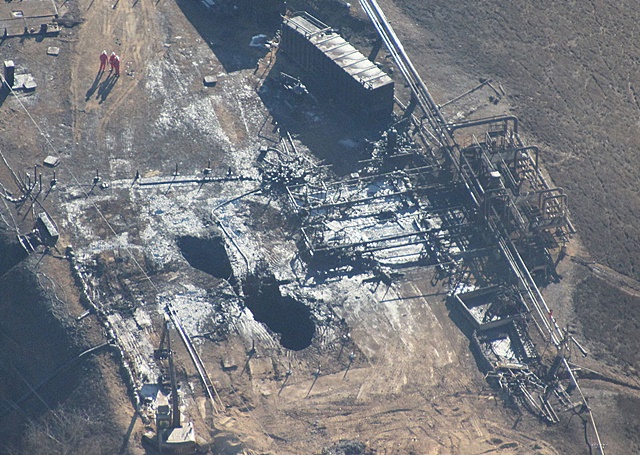
|
| Aliso Canyon well SS-25 after a relief well kill operation. |
The Aliso Canyon gas leak (also called Porter Ranch gas leak and Porter Ranch gas blowout) was a massive natural gas leak
that was discovered by SoCalGas employees on October 23, 2015. Gas was escaping from a well within the Aliso Canyon's underground
storage facility in the Santa Susana Mountains near Porter Ranch, Los Angeles. This second-largest gas storage facility of
its kind in the United States belongs to the Southern California Gas Company, a subsidiary of Sempra Energy. On January 6, 2016,
Governor Jerry Brown issued a state of emergency. The Aliso gas leak's carbon footprint is said to be larger than the
Deepwater Horizon leak in the Gulf of Mexico. On February 11, 2016, the gas company reported that it had the leak under control.
On February 18, 2016, state officials announced that the leak was permanently plugged.
|
Azerbaijan, Bulla Deniz, 17 Aug 2013
|
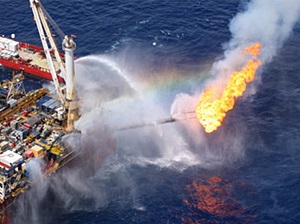
|
| Bulla Deniz Well No. 90, SOCAR Operated (the State Oil Company of Azerbaijan)
|
Exploration Well No. 90 in the Bulla Deniz gas field suffered a blowout as it neared
a depth of 6,000 meters, and subsequently caught fire. 62 platform workers were
evacuated to safety and there are no casualties. According to preliminary data,
the reason for the accident was high pressure which emerged when going through a
productive layer.
|
USA, South Timbalier 220, Walter-Hercules Loss of Containment, 23 July 2013
|
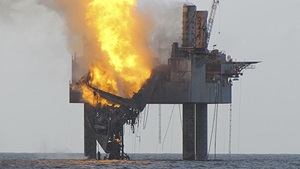
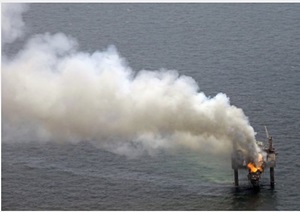
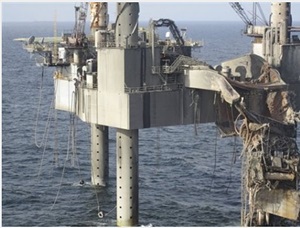
|
| ST 220, Walter Operated
|
The operator, Houston-based Walter Oil & Gas Corp., reported a loss of control of
Well A-3 at 8:45 a.m. July 23 2013 on an unmanned platform during completion work on
a sidetrack well. Consequently, 44 people were evacuated from the Hercules 265 jack
up. Leaking gas ignited at 10:45 p.m. July 23.
On July 25, the well was reported to have bridged over, meaning sand and sediment
blocked the flow of gas. Preliminary visual inspection of the area indicated the
structural integrity of the rig remains intact.
|
UK, Elgin Well G4 Loss of Containment, 25 March 2012
|
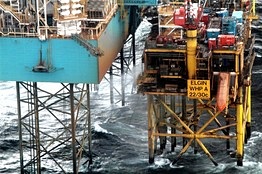
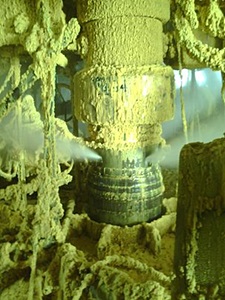
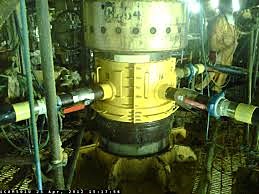
|
Total's response website
FYI, an SPE paper on well issues in the Elgin area is available: SPE 105736: "Overcoming The Loss of a Primary Barrier in an HPHT well - Investigation
and Solution "
|
|
USA, Deep Water Horizon, 20 April 2010
|
|
|
BP's Gulf of Mexico response website
|
BP's Deepwater
Horizon Accident Investigation Report
Also called the "Bly Report". On September 8, 2010, BP released a report entitled
"Deepwater Horizon Accident Investigation Report," an internal analysis of the April
20, 2010 blowout that killed 11 people and resulted in a massive oil spill in the
Gulf of Mexico. The report was prepared by an internal investigation team selected
by BP.
The report identified eight key findings related to the cause of the accident:
- The annulus cement barrier did not isolate the hydrocarbons.
- The shoe track barriers did not isolate the hydrocarbons.
- The negative-pressure test was accepted although well integrity had not been established.
- Influx was not recognized until hydrocarbons were in the riser.
- Well control response actions failed to regain control of the well.
- Diversion to the mud gas separator resulted in gas venting onto the rig.
- The fire and gas system did not prevent hydrocarbon ignition.
- The BOP emergency mode did not seal the well.
|
Deepwater Horizon Joint
Investigation
Coast Guard and Department of Interior
The Official Site of the Joint Investigation Team
The purpose of this joint investigation is to develop conclusions and recommendations
as they relate to the Deepwater Horizon MODU explosion and loss of life on April
20, 2010. The facts collected at this hearing, along with the lead investigators'
conclusions and recommendations will be forwarded to Coast Guard Headquarters and
BOEM for approval. Once approved, the final investigative report will be made available
to the public and the media.
|
USCG -Report of Investigation into the Circumstances
Surrounding the Explosion, Fire, Sinking and Loss of Eleven Crew Members Aboard
the MOBILE OFFSHORE DRILLING UNIT DEEPWATER HORIZON In the GULF OF MEXICO April
20 – 22, 2010
Key investigative findings:
- Initial flow should have been routed through the diverter line.
- The Deepwater Horizon lacked systems to properly track its hazardous electrical
equipment, some of which board was in “bad condition” and “severely corroded.”
- Gas detectors were not set to automatically activate the emergency shutdown (ESD)
system for the engines or to stop the flow of outside air into the engine rooms.
The bridge crew was not trained on when to activate the ESD systems.
- Some gas detectors were bypassed or inoperable.
- Emergency generators were not sufficiently isolated from the main power system.
- Blast protection was insufficient to protect the crew. Bulkheads were not sufficiently
fire resistant.
- The dual command structure on the DWH between the Master and the OIM caused confusion
at a critical point in the emergency.
- No fire pump capability (no diesel backup) once electrical power was lost.
- Emergency evacuation procedures were not followed; drills were inadequate.
- The presence of executives onboard was a distraction.
- No effective barrier to shield the lifeboat launch area from intense heat.
- The presence of the Damon Bankston standby vessel no doubt saved lives.
- DWH was not in compliance with requirements for maintaining the watertight integrity
of its internal compartments
- Massive quantities of water were directed toward the DWH without careful consideration
of the potential effects of water entering the hull.
- “Pursuant to its Search and Rescue Policy, the Coast Guard prioritized search
and rescue efforts and thus did not take charge of, or coordinate, the marine firefighting
effort.”
- Transocean had a history of International Safety Management Code
violations.
- The DWH BOP had not been recertified for over ten years. Key BOP components had
significantly surpassed the recommended recertification period and needed to be
replaced.
- In 2008, the DWH had two significant incidents – a loss of power that jeopardized
the MODU’s ability to maintain its position above the well and the flooding of a
compartment resulting from a failure to close valves. Neither of these incidents
was properly investigated and addressed.
- Transocean’s training and emergency response preparedness were deficient. The
master was unaware that he could activate the critical emergency disconnect sequence
(EDS).
- The flag state, Republic of the Marshall Islands (RMI), failed to directly ensure
that DWH was in compliance with all applicable requirements, including those relating
to the electrical equipment in hazardous zones, degradations in watertight integrity,
crew training, emergency preparedness, and others.
- The Coast Guard conducted
limited safety examinations of DWH in 2008 and 2009, but did not identify safety
concerns.
- Given the flag state’s oversight deficiencies, the Coast Guard’s regulatory scheme,
which defers heavily to the flag state to ensure the safety of foreign-flagged MODUs,
is insufficient.
DNV BOP Report
|

National Commission on the BP Deepwater
Horizon Oil Spill and Offshore Drilling
|
The Commission's
Final Report: "Deep Water - The Gulf Oil Disaster and the Future of Offshore
Drilling. Report to the President."
"As a result of our investigation, we conclude:
- The explosive loss of the Macondo well could have been prevented.
- The immediate causes of the Macondo well blowout can be traced to a series of
identifiable mistakes made by BP, Halliburton, and Transocean that reveal such systematic
failures in risk management that they place in doubt the safety culture of the entire
industry.
- Deepwater energy exploration and production, particularly at the frontiers of
experience, involve risks for which neither industry nor government has been adequately
prepared, but for which they can and must be prepared in the future.
- To assure human safety and environmental protection, regulatory oversight of leasing,
energy exploration, and production require reforms even beyond those significant
reforms already initiated since the Deepwater Horizon disaster. Fundamental reform
will be needed in both the structure of those in charge of regulatory oversight
and their internal decisionmaking process to ensure their political autonomy, technical
expertise, and their full consideration of environmental protection concerns.
- Because regulatory oversight alone will not be sufficient to ensure adequate safety,
the oil and gas industry will need to take its own, unilateral steps to increase
dramatically safety throughout the industry, including self-policing mechanisms
that supplement governmental enforcement.
- The technology, laws and regulations, and practices for containing, responding
to, and cleaning up spills lag behind the real risks associated with deepwater drilling
into large, high-pressure reservoirs of oil and gas located far offshore and thousands
of feet below the ocean’s surface. Government must close the existing gap and industry
must support rather than resist that effort.
- Scientific understanding of environmental conditions in sensitive environments
in deep Gulf waters, along the region’s coastal habitats, and in areas proposed
for more drilling, such as the Arctic, is inadequate. The same is true of the human
and natural impacts of oil spills."
Chief Councel's Report
Technical Findings
The root technical cause of the blowout is now clear: The cement that BP and Halliburton
pumped to the bottom of the well did not seal off hydrocarbons in the formation.
While we may never know for certain the exact reason why the cement failed, several
factors increased the risk of cement failure at Macondo. They include the following:
First, drilling complications forced engineers to plan a "finesse" cement job that
called for, among other things, a low overall volume of cement. Second, the cement
slurry itself was poorly designed—some of Halliburton‘s own internal tests showed
that the design was unstable, and subsequent testing by the Chief Counsel‘s team
raised further concerns. Third, BP‘s temporary abandonment procedures—finalized
only at the last minute—called for rig personnel to severely ?underbalance? the
well before installing any additional barriers to back up the cement job.
BP missed a key opportunity to recognize the cement failure during the negative
pressure test that its well site leaders and Transocean personnel conducted on April
20. The test clearly showed that hydrocarbons were leaking into the well, but BP‘s
well site leaders misinterpreted the result. It appears they did so in part because
they accepted a facially implausible theory suggested by certain experienced members
of the Transocean rig crew. Transocean and Sperry Drilling rig personnel then missed
a number of further signals that hydrocarbons had entered the well and were rising
to the surface during the final hour before the blowout actually occurred. By the
time they recognized a blowout was occurring and activated the rig‘s blowout preventer,
it was too late for that device to prevent an explosion. By that time, hydrocarbons
had already flowed past the blowout preventer and were rushing upward through the
riser pipe to the rig floor.
Management Findings
The Chief Counsel‘s team concluded that all of the technical failures at Macondo
can be traced back to management errors by the companies involved in the incident.
BP did not fully appreciate all of the risks that Macondo presented. It did not
adequately supervise the work of its contractors, who in turn did not deliver to
BP all of the benefits of their expertise. BP personnel on the rig were not properly
trained and supported, and all three companies failed to communicate key information
to people who could have made a difference.
Among other things:
- BP did not adequately identify or address risks created by last-minute changes
to well design and procedures. BP changed its plans repeatedly and up to the very
last minute, sometimes causing confusion and frustration among BP employees and
rig personnel.
- When BP did send instructions and procedures to rig personnel, it often provided
inadequate detail and guidance.
- It is common in the offshore oil industry to focus on increasing efficiency to
save rig time and associated costs. But management processes must ensure that measures
taken to save time and reduce costs do not adversely affect overall risk. BP‘s management
processes did not do so.
- Halliburton appears to have done little to supervise the work of its key cementing
personnel and does not appear to have meaningfully reviewed data that should have
prompted it to redesign the Macondo cement slurry.
- Transocean did not adequately train its employees in emergency procedures and
kick detection, and did not inform them of crucial lessons learned from a similar
and recent near-miss drilling incident.
What the men and women who worked on Macondo lacked—and what every drilling operation
requires—was a culture of leadership responsibility. In remote offshore environments,
individuals must take personal ownership of safety issues with a single-minded determination
to ask questions and pursue advice until they are certain they get it right.
Regulatory Findings
The Commission‘s full report examines in depth the history of Minerals Management
Service (MMS) regulatory programs and makes specific recommendations for regulatory
reform of what is now the Bureau of Offshore Energy Management, Regulation, and
Enforcement (BOEMRE). The Chief Counsel‘s team found that the MMS regulatory structure
in place in April 2010 was inadequate to address the risks of deepwater drilling
projects like Macondo. Then-existing regulations had little relevance to the technical
and management problems that contributed to the blowout. Regulatory personnel did
not have the training or experience to adequately evaluate the overall safety or
risk of the project.
|
Committee
for the Analysis of Causes of the Deepwater Horizon Explosion, Fire and Oil Spill
to Identify Measures to Prevent Similar Accidents in the Future
National Academy of Engineering and National Research Council (NAE & NRC)
At the request of the Department of the Interior (DOI), a National Academy of Engineering/National
Research Council (NAE/NRC) committee is examining the probable causes of the Deepwater
Horizon explosion, fire, and oil spill in order to identify measures for preventing
similar harm in the future. The study is organized under the auspices of the NAE
and the NRC’s Transportation Research Board (through its Marine Board) and the Division
on Earth and Life Studies, with assistance from the Division on Engineering and
Physical Sciences.
|
Macondo Well – Deepwater Horizon
Blowout, Lessons for Improving Offshore Drilling Safety
SUMMARY RECOMMENDATIONS
On the basis of its investigation of the Macondo well–Deepwater Horizon disaster
and discussions with industry operating in the United States and the North Sea and
with regulators from the United States, the Republic of the Marshall Islands, Australia,
the United Kingdom, and Norway, the committee has developed a series of recommendations
that it believes would materially improve the safety of future operations in the
Gulf of Mexico.
- Given the critical role that margins of safety play in maintaining well control,
guidelines should be established to ensure that the design approach incorporates
protection against the various credible risks associated with the drilling and completion
processes. (Recommendation 2.1)
- All primary cemented barriers to flow should
be tested to verify quality, quantity, and location of cement. The integrity of
primary mechanical barriers (such as the float equipment, liner tops, and well head
seals) should be verified by using the best available test procedures. All tests
should have established procedures and predefined criteria for acceptable performance
and should be subject to independent, near-real-time review by a competent authority.
(Recommendation 2.3)
- BOP systems should be redesigned to provide robust and
reliable cutting, sealing, and separation capabilities for the drilling environment
to which they are being applied and under all foreseeable operating conditions of
the rig on which they are installed. Test and maintenance procedures should be established
to ensure operability and reliability appropriate to their environment of application.
Furthermore, advances in BOP technology should be evaluated from the perspective
of overall system safety. Operator training for emergency BOP operation should be
improved to the point that the full capabilities of a more reliable BOP can be competently
and correctly employed when needed in the future. (Recommendation 3.1)
- Instrumentation
and expert system decision aids should be used to provide timely warning of loss
of well control to drillers on the rig (and ideally to onshore drilling monitors
as well). If the warning is inhibited or not addressed in an appropriate time interval,
autonomous operation of the blind shear rams, emergency disconnect system,
- Efforts to reduce the probability of future blowouts should be complemented by capabilities
of mitigating the consequences of a loss of well control. Industry should ensure
timely access to demonstrated well-capping and containment capabilities. (Recommendation
5.6)
- The United States should fully implement a hybrid regulatory system that
incorporates a limited number of prescriptive elements into a pro-active, goal-oriented
risk management system for health, safety, and the environment. (Recommendation
6.1)
- BSEE5 and other regulators should identify and enforce safety-critical
points during well construction and abandonment that warrant explicit regulatory
review and approval before operations can proceed. (Recommendation 6.6)
- A
single U.S. government agency should be designated with responsibility for ensuring
an integrated approach for system safety for all offshore drilling activities. (Recommendation
6.15)
- Operating companies should have ultimate responsibility and accountability
for well integrity, because only they are in a position to have visibility into
all its aspects. Operating companies should be held responsible and accountable
for well design, well construction, and the suitability of the rig and associated
safety equipment. Notwithstanding the above, the drilling contractor should be held
responsible and accountable for the operation and safety of the offshore equipment.
(Recommendations 5.1 and 6.20)
- Industry should greatly expand R&D efforts
focused on improving the overall safety of offshore drilling in the areas of design,
testing, modeling, risk assessment, safety culture, and systems integration. Such
efforts should encompass well design, drilling and marine equipment, human factors,
and management systems. These endeavors should be conducted to benefit the efforts
of industry and government to instill a culture of safety. (Recommendation 5.2)
- Industry, BSEE, and other regulators should undertake efforts to expand significantly
the formal education and training of personnel engaged in offshore drilling to support
proper implementation of system safety. (Recommendations 5.3 and 6.23)
- Industry,
BSEE, and other regulators should improve corporate and industry-wide systems for
reporting safety-related incidents. Reporting should be facilitated by enabling
anonymous or “safety privileged” inputs. Corporations should investigate all such
reports and disseminate their lessons-learned findings in a timely manner to all
their operating and decision-making personnel and to the industry as a whole. A
comprehensive lessons-learned repository should be maintained for industry-wide
use. The information can be used for training in accident prevention and continually
improving standards. (Recommendations 5.4 and 6.14)
- Industry, BSEE, and other
regulators should foster an effective safety culture through consistent training,
adherence to principles of human factors, system safety, and continued measurement
through leading indicators. (Recommendations 5.5 and 6.25)
On the basis of the available evidence, the committee has identified the principal
causes of the incident, as summarized above and described in the report in greater
detail. Certain factors, such as the complete hydrocarbon flow path, may never be
definitively identified, since the requisite forensic evidence lies more than 2
miles beneath the seabed. Similarly, many questions concerning the Deepwater Horizon
rig will remain unanswerable so long as it lies on the bottom of the Gulf of Mexico,
with its equipment unavailable for inspection and data recorders unreadable. Furthermore,
the loss of several of the workers involved in the pivotal decisions on the Deepwater
Horizon limits inquiry into the causes and rationale involved in those decisions.
Even so, the committee believes that it was able to identify and assess the principal
direct and root causes of the incident and develop a series of recommendations that
would provide suitable and cost-effective corrective actions, materially reducing
the likelihood of a similar event in the future.
|
US Department of the
Interior - BOEMRE
|
REPORT REGARDING THE CAUSES OF THE
APRIL 20, 2010 MACONDO WELL BLOWOUT
|
Petroleum Safety Authority Norway
|
The Petroleum Safety Authority Norway’s concluding report on its follow-up of the Deepwater Horizon accident
|
Chemical Safety Board
|
CSB to Investigate Root Causes of BP Deepwater Horizon Blowout Accident
|
Montara Oil Spill, 21 August 2009
|
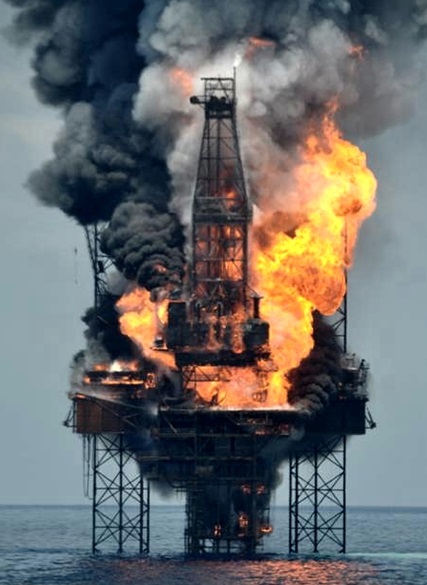
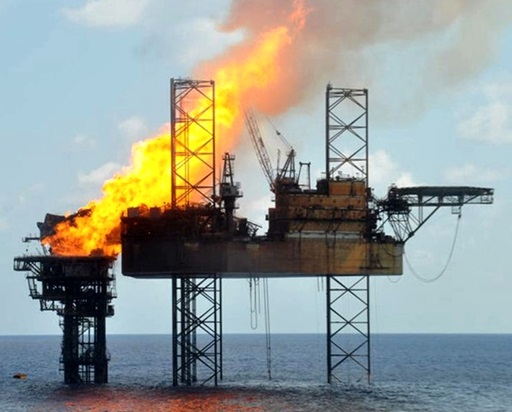
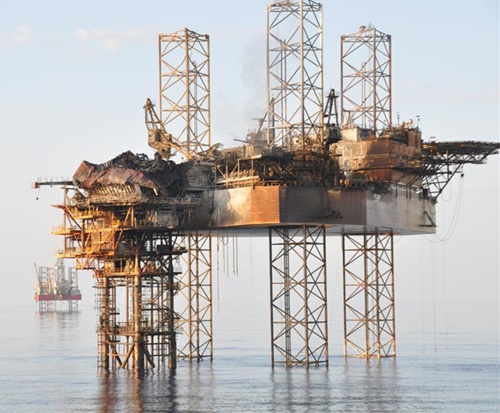
|
Wikipedia Article
|
The Montara oil spill was an oil and gas leak and subsequent slick that took place
in the Montara oil field in the Timor Sea, off the northern coast of Western Australia.
It is considered one of Australia's worst oil disasters. The slick was released
following a blowout from the Montara wellhead platform on 21 August 2009, and continued
leaking until 3 November 2009 (in total 74 days), when the leak was stopped by pumping
mud into the well and the wellbore cemented thus "capping" the blowout. The West
Atlas rig is owned by the Norwegian-Bermudan Seadrill, and operated by PTTEP Australasia
(PTTEPAA), a subsidiary of PTT Exploration and Production (PTTEP) which is in turn
a subsidiary of PTT, the Thai state-owned oil and gas company was operating over
on adjacent well on the Montara platform. Houston-based Halliburton was involved
in cementing the well. The Montara field is located off the Kimberley coast, 250
km (160 mi) north of Truscott airbase, and 690 km (430 mi) west of Darwin. Sixty-nine
workers were safely evacuated from the West Atlas jackup drilling rig when the blowout
occurred.
|
UK, Snorre A Well P-31A, 28 November 2004
|
|
PSA Investigation
of Snorre Blowout
|
During work in well P-31A on Snorre A on 28 November 2004, a gas blowout occurred
on the seabed with subsequent gas on and under the facility. Many of the personnel
were evacuated by helicopter to nearby facilities. The emergency response team on
board considered full evacuation on three separate occasions. The flare continued
to burn during parts of the incident and was a potential ignition source for gas.
On 28 November 2004, an uncontrolled situation occurred during work in Well P-31A
on the Snorre A facility (SNA). The work consisted of pulling pipes out of the well
in preparation for drilling a sidetrack. During the course of the day, the situation
developed into an uncontrolled gas blowout on the seabed, resulting in gas on and
under the facility. Personnel who were not involved in work to remedy the situation
were evacuated by helicopter to nearby facilities. The work to regain control over
the well was complicated by the gas under the facility which, among other things,
prevented supply vessels from approaching the facility to unload additional drilling
mud. After having mixed mud from the available well fluid chemicals, this was pumped
into the well on 29 November 2004, and the well was stabilized. With the well stabilized
and the gas flow stopped, the work to secure the well with the necessary barriers
could commence.
The regulations require technical, operational and organizational barriers that
both prevent serious incidents from occurring and that they escalate. Serious failures
and deficiencies have been uncovered in all phases of Statoil's planning and implementation
on well P-31A. These relate to:
- Failure to comply with governing documentation
- Deficient understanding and implementation of risk assessments
- Deficient involvement of management
- Breach of well barrier requirements.
The non-conformities relate to failure on the part of both individuals and groups
in Statoil and with the drilling contractor. The non-conformities occurred at several
levels in the organization on land and on the facility.
|
USA, Moss Buff Cavern #1, August 2004
|
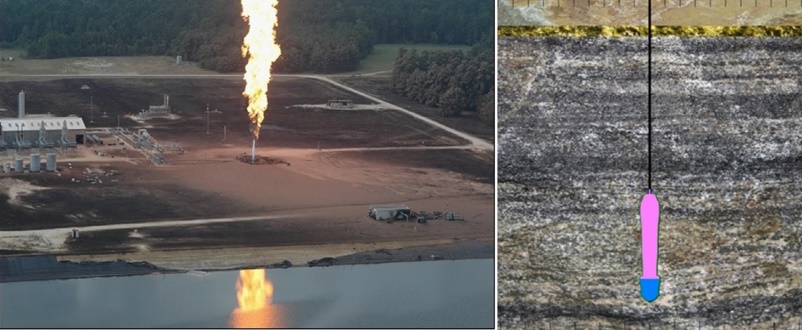
|
| Moss Bluff Cavern #1
|
In August 2004, Cavern #1 of the Moss Bluff natural gas storage in Texas experienced a major gas release and fire (Fig. 2). The cavern bottom was filled with saturated brine, and the volume of the gas-filled part of the cavern
was V0 = 1 268 000 m3 . The blowout initiated during de-brining of the cavern when gas entered the 8-5=8” brine string, causing the pipe to burst at ground level. The ensuing fire resulted, 21 hours (0.88 day) later, in separation of the wellhead assembly and the uncontrolled
loss of gas from the 20” production casing. The fire selfextinguished about 6-1=2 days later, when all the gas was burned off. More than 6 sbcf of gas had been released.
|
|
|
Aker Solutions
ScanWell
|
Leak Metering System (LMS)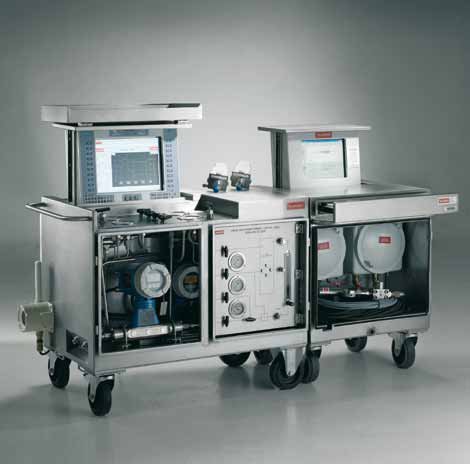
Background:
Failure in downhole barriers such as completion, tubing, casing or cement is a growing
problem in the North Sea mainly due to the increasing number of ageing wells. Such
failures need to be addressed at an early stage to reduce the risk to personnel,
equipment and the environment. If a leak is allowed to develop the potential of
an uncontrolled situation will increase and the chances of a successful and cost-effective
repair will be reduced. The risks associated with barrier failures are defined considering
annulus pressure value. Allowable leak rate for oil, gas and water are regulated
by Norsok D-010 and API RP 14B.
The Leak Metering System (LMS) provides the following measurements:
• Direct leak rate measurements up to 5000 psi
• Leak rate in accordance with API RP 14B
• Detailed composition and physical properties of the leak
• Measurement of leak depth/possible leak path
• Measurement of gas volume contained in annuli
• Pressure development with respect to Maximum Allowable Annular Surface Pressure
(MAASP)
• Level of toxic components
• Levels of corrosive components
• Communication test between wellbores
• Pressure build-up testing for leak rate calculations
• Real-time and historical pressure and temperature measurements
|
| Baker
|
Tubing patches
|
|
BTI Services
|
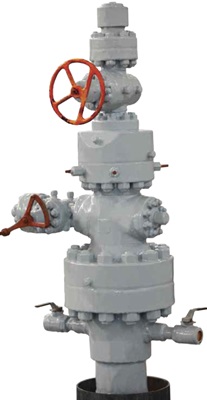
OXIFREE METAL PROTECTION - Brochure
Oxifree Coatings are designed for the protection of metallic components and structures.
They contain organic corrosion inhibitors, are reusable and provide a shield against
many corrosive contaminants, ensuring the ultimate protection of your assets.
Due to the barrier properties of the material, Oxifree TM198 also provides a shield
against ingress of dust, sand, mud
|
|
Canada Tech
|
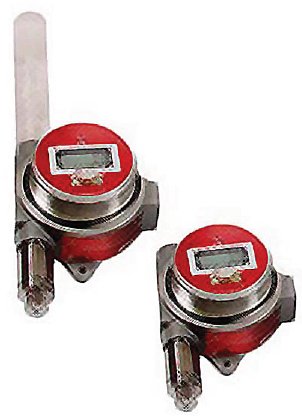 Our Surface Logger is a surface pressure gauge which displays data in real-time.
The Surface Logger operates as a memory recorder or a real-time, short-range wireless
pressure transmitter.
Our Surface Logger is a surface pressure gauge which displays data in real-time.
The Surface Logger operates as a memory recorder or a real-time, short-range wireless
pressure transmitter.
With regular usage, a battery has a life of 1 to 2 years. Sample rates are programmable
and the Surface Logger displays pressure and temperature in various units as determined
by the user.
The use of Canada Tech’s Firmware version 1.6 or greater will allow the Radio Surface
Logger to function as a memory recorder and a wireless pressure transmitter when
set to Log Mode. The Radio Surface Logger is able to independently turn off the
radio in a radio-free environment. Built using our proven Piezo-Resistive sensor
and acquisitions electronics, the Surface Logger produces near- quartz quality data
in a reliable and economical package. Ambient temperature compensation ensures the
long term accuracy of the data, day or night.
|
|
Echometer
|
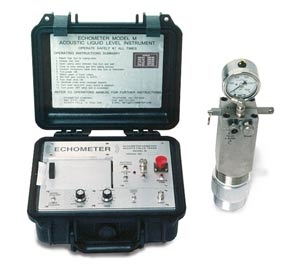 Well sounding devices for determining fluid levels
Well sounding devices for determining fluid levels
|
| PDS
|
Memory logging tools - calipers & spinners
|
|
Pioneer Petrotech Services Inc. (PPS) is
a global leader in the development and manufacturing of high quality pressure and
temperature gauges for oil and gas industry. Our innovative electronic technology
has enabled us to offer robust 200 deg.C gauges for assisting oil companies to explore
oil reserves in deep water areas. The easy to use software has made gauge operator's
job a lot more productive and simpler. Our mission is to help world wide customers
acquire accurate reservoir pressure and temperature data in all different well conditions.
|
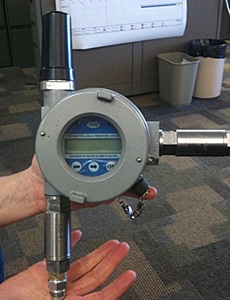 PPS 31 - Wellhead Pressure Logger The PPS31 is a wellhead digital pressure and temperature
monitoring gauge. The application of radio transmission allows operators to receive
real-time data which is also stored in the memory chip in the logger. Pressure and
temperature can also be directly read from the LCD (liquid crystal display). The
intrinsically safe design permits the logger to be used in critical environments.
PPS 31 - Wellhead Pressure Logger The PPS31 is a wellhead digital pressure and temperature
monitoring gauge. The application of radio transmission allows operators to receive
real-time data which is also stored in the memory chip in the logger. Pressure and
temperature can also be directly read from the LCD (liquid crystal display). The
intrinsically safe design permits the logger to be used in critical environments.
|
| Schlumberger
|
Logging services
|
|
SeaWell (formerly
TecWell)
|
Seawell's ground-breaking Point diagnostics suite uses innovative, high definition,
ultrasound technology for fast, accurate fault location and greater operator confidence
The "Point" system includes four powerful diagnostic tools
- LeakPoint: identifying the precise location of leaks in tubing, casing and well
components
- FlowPoint: revealing the exact source and flow paths of annular fluids
- SandPoint: accurately locating the entry points of damaging sand
- EntryPoint: bringing much higher resolution to production profiles
|
|
Spidr Gauges
|
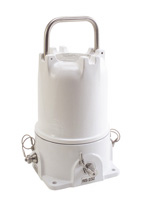 Self-contained pressure and temperature recording device
Self-contained pressure and temperature recording device
|
|
Stork Technical Services
|
 Hot Bolt Clamp: permits replacement of corroded bolts on live flanged connections. Hot Bolt Clamp: permits replacement of corroded bolts on live flanged connections.
Generally, hot bolting is not recommended on flanges with less than 8 bolts. This tool replicates the forces supplied by the bolts, allowing
hot bolting on 4 and 6 bolt flanges.
|
|
ThinJack
|
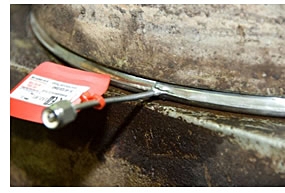 What is ThinJack? What is ThinJack?
- ThinJack is a TIG-welded 2mm thick grade 316L steel envelope.
- ThinJack
works by inflating the envelope with hydraulic oil pressure.
- ThinJack expands
by up to 10-15 mm by inflation and exerts hundreds of tonnes of force.
- ThinJack
is the ideal solution to separating and jacking problems in hazardous, difficult
to access or restricted areas
|
|
Wachs
|
On-site machining, casing and wellhead cutting and valve turning equipment &
services.
|
|
Weatherford
|
Tubing patches
|
|
WellCut Decommissioning Services
|
Engineering services, hot tap machines and field machining services.
|
|
Welltec
|
|
|
Wellube - Unique Marine Group
|
Engineering services, hot tap machines and field machining services.
|
|
|
|
|
|
Brinker-Technology
|
At Brinker Technology we offer a unique brand of innovative technical solutions
to promote integrity management to the pipeline industry worldwide. Based around
our patented Platelet Technology® we deliver these solutions through:
• Implementation of novel leak locating and sealing products and engineering systems
• Expert consultancy
• Ongoing research and development
We are a dynamic and creative company who are focused on implementing our unique
technology to the advantage of the pipeline industry worldwide. We are based in
Aberdeen, Scotland but have a truly global presence having completed projects in
the UK, Norway, Australia, Azerbaijan and Alaska.
|
CSI Technologies
Subsidiary of Suprior Energy and Wild Well Control
|
UltraSeal®, an epoxy well sealant designed to create seals over a wide range
of well conditions.
CSI Technologies provides research, engineering and oilfield product development
for the energy industry.
CSI Technologies solves challenging problems ranging from high-pressure, high-temperature
cementing to effective stimulation techniques to lost circulation. The company has
a long history of developing new oilfield methods and products using its applied
engineering capabilities.
|
|
Furmanite
|
Leak-sealing technology and onsite service. Since 1929, we’ve created groundbreaking
and patented leak sealing technology; and we consistently provide these solutions
with the highest level of service to customers around the world.
|
|
Loctite
|
When something breaks, "Repair, don't Replace" it! Replacing household items that
break or show wear can become expensive. Any repair - from small to large - can
be accomplished with just three Loctite products: Loctite Ultra Gel Super Glue,
Loctite 1 Minute Instant Mix Epoxy, or Loctite Power Grab Construction Adhesives.
All are Solvent Free making the air nice to breathe, feature easy to use applicators,
and are recloseable to allow for multiple uses. For over 55 years, Loctite Adhesives
have delivered Trusted Performance and Proven Results. You can tackle any repair
with the performance of Loctite.
|
|
M & D Industries - "Ultra Seal"
|
Ultra Seal® R Sealant Ultra Seal® R Sealant is a special epoxy resin. The material’s
viscosity has been lowered to provide easy mixing and placement. The lowered viscosity
is accomplished without the volumetric shrinkage that usually accompanies the thinning
of epoxy resin. Applications include micro annular gas migration, mechanical isolation
valve, casing leaks, well bore stability, and loss circulation.
|
|
Oil Center Research
|
Distributes:
GX Safety Seal (711-714), used
to plug leaks in DHSV lines
Hyposeal (527 & 528), used to plug tubing
and casing leaks.
|
|
Sandaband
|
Sandaband consists of concentrated sand made into a pumpable slurry with water and
brines. Sandaband has a particle fraction in excess of 75% by volume. The particle
size distribution controls the rheology, permeability and porosity of the slurry.
Sandaband characteristics:
- Behaves as a true Bingham Plastic material
- It is pumped like a liquid, sets up like a “solid mass” when in place, but without
becoming rigid
- Sandaband is non polluting and chemically inactive.
|
|
SealMaker International
|
SEALMAKER International specializes in engineered leak repair solutions. Uses liquid
pressure activated sealants to repair troublesome leak problems associated with
oil and gas production onshore and offshore.
|
| Seal-Tite
|
Seal-Tite International has a line of pressure activated sealants designed to seal
tubing hanger, casing hanger and wellhead leaks; production tubing and casing leaks;
microannulus, sustained casing pressure and salt dome storage cavern leaks; control
line, safety valve and packer leaks; as well as umbilical, flowline and subsea leaks.
After the sealant has reached the leak site, the sealant begins to plate out on
the edges of the leak, and simultaneously bridges across the leak to seal it.
|
|
WellChem
|
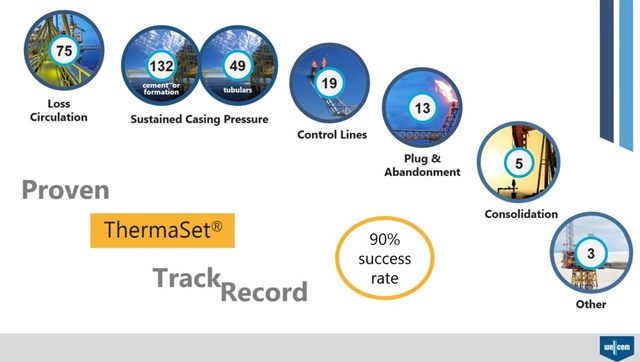 ThermaSet is a polymer resin system that is used to solve a variety of well integrity challenges. Typical applications include: lost circulation,
compromised wellbore integrity, plug and abandonment, and the remediation of sustained casing pressure. ThermaSet is a polymer resin system that is used to solve a variety of well integrity challenges. Typical applications include: lost circulation,
compromised wellbore integrity, plug and abandonment, and the remediation of sustained casing pressure.
|
|
|
|
|
|
|
|
Expro: "SafeWells"
|
SafeWells enables operators to improve safety and maximise well availability by
providing visibility of integrity issues across their well stock. Data input can
be configured to use clients' existing reporting and documentation structures, to
ensure a rapid and effective implementation of the system.
www.wellintegrity.com.
|
|
Exprosoft: "WIMS"
|
"WIMS" - Well Integrity Management System. Software application that will contribute
to a uniform and structured approach for handling of well integrity during the lifetime
of a well. WIMS will ensure that the information necessary for handling well integrity
is available through one system, and with a clear indication of the well barrier
status at all times.
|
Halliburton
|
Halliburton's cementing design software: "Using our programs, operators can complete
a range of related tasks, from analyzing the casing and cement sheath, to surveying
the surrounding formation to determine the best mechanical properties for an optimum
sealant."
Also provides a link to the popular "eRedbook" software.
|
|
Wood Group Intetech: "iWIT"
|
A software system for managing well integrity related information.
Their brochure.
|
Landmark: "DecisionSpace Well Integrity Management" (DS-WIM)
|
Designed for operating companies that are implementing a complete, agile and integrated well integrity management
system across all assets in their organization, in accordance with corporate and regulatory requirements.
It is also designed for companies that are working towards this, by adapting existing processes and business workflows
to create well integrity management systems for sub-sets of assets. It is a recognized challenge for an operating company
to ensure the integrity and availability of all its wells, all the time
|
NRG Well Management Ltd
NRG Well Examination and Management Systems Ltd
|
NRG Well Management Ltd is focused on the cost effective delivery of Project Management
for Drilling and Well Operations. In addition we carry out Well Engineering and
Field Development Studies which range in size from simple one day technical reviews
through to detailed multi disciplinary studies lasting many months, for a wide variety
of Clients.
NRG Well Examination & Management Systems Ltd, in addition to providing independent
well examination services, specialises in the delivery of workable management systems
for upstream Operating Companies and Service Providers. Our Systems assist the client
to both manage health, safety and environmental hazards as well as enable them to
demonstrate compliance with all the applicable licence and statutory requirements
without the need for extensive Management Systems. Apart from satisfying the statutory
requirements our Systems contribute towards lowering the cost of operations by ensuring
that Clients’ Management focus their attention on their defined responsibilities,
whilst enabling them to effectively delegate responsibilities to contractors where
necessary.
|
|
Peloton: WellView, RigView, SiteView, ProdView
|
Drilling and Well Data Software Solutions
- Peloton is 'well focused' on developing the world's best drilling and well data
software solutions.
- Peloton started developing WellView® in 1991 for well operations and schematic
visualization. Today, Peloton has evolved to provide a full well lifecycle data
management solution for Operations, Drilling and Construction/Reclamations.
- Peloton's comprehensive data model and software technology improves morning reporting,
well and site visualization and data quality.
|
|
Talib Syed & Associates Inc.
|
Talib Syed & Associates, Inc. (TSA, Inc.) provides
petroleum and environmental engineering consulting services to both industrial clients
and federal/state agencies. Provide technical/engineering and regulatory support for
U.S. Environmental Protection Agency on all aspects of UIC program needs.
|
Yuit: "SWIS"
|
SWIS (Smart Well Integrity System). "Customizable solution to assist in facilitating
your well integrity workflows".
|
|
Well Integrity Tracking System (WITS)
|
A free web site to demonstrate the ability to track the well integrity status of
wells. Allows setup of new wells, tracking of barrier status, entry of well intervention
and annulus bleed events, etc.
|
|
WellEz
|
WellEz.NET™ for field operations reporting WellEz provides the most convenient and
easy-to-use field reporting solution available today. Designed for integrated field
reporting for the lifecycle of a well, WellEz.NET leverages web-based technology
to manage all well data from initial planning to a variety of reporting functions
such as Drilling, Completion, Work-over , Facilities, and Plugging and Abandoning
(P&A). In the office, bottom-hole assembly (BHA), drilling mud, well costs and a
range of other critical data, can be captured and analyzed using custom Multi-Day
and Multi-Well Reports. Wellbore schematics can be automatically created from the
field data.
|
|
|
|
OneSubsea
|
OneSubsea is a joint venture to manufacture and develop products, systems and services
for the subsea oil and gas market. This new company will offer a step change in
reservoir recovery for the subsea oil and gas industry through integration and optimization
of the entire production system over the life of the field. The integration of the
production system will be accomplished by combining superior reservoir knowledge
and wellbore technologies, with industry leading subsea technologies, all together
delivering enhanced productivity, reliability and integrity.
Cameron and Schlumberger have 60/40 ownership of the joint venture, respectively.
|
|
SubseaIQ
|
Launched in April 2007, SubseaIQ focuses solely on offshore oil and gas engineering
and construction projects. By providing offshore project reports, daily field development
activities and a comprehensive database of offshore jobs, SubseaIQ strives to serve
the upstream offshore community. SubseaIQ services include:
- Data and descriptions of the world's largest and most important offshore oil and
gas fields
- A weekly newsletter covering offshore field development activities worldwide
- Information on leading companies that provide products and services relevant to
offshore field development
- A vast job board that contains the latest offshore engineering opportunities
|
|
|
|
Completions Manager - Petrofocus
|
Completions Manager™ provides a fast and highly visible improvement in well completion
information. Within a month of an order, a client can have: 100 diagrams of their
wells in Completions Manager™ format, Completions Manager™ software installed at
their offices, All users trained how to maintain their drawings and create new ones.
The software allows engineering teams to design and maintain high quality well completion
diagrams in a controlled and standardized manner. Using the software's comprehensive
symbol libraries, internal database and automated drawing features, engineers can
create drawings quickly and easily without compromising on quality.
|
|
Completion Services
|
Completion Services is a Well Completion Diagram Quality Assurance and Software
Solution business, working with small, medium and large oil companies throughout
the world that are looking to centralize and quality assure their completion schematics,
resulting in easy access to what is actually downhole and the most up to date drawings.
|
|
Landmark: Profile
|
PROFILE™ software helps engineers create and document planned completions designs,
as well as review current and historical equipment installation and configuration
in completed wellbores. With PROFILE software, every team member can produce high-quality
schematic diagrams of wellbore equipment. This feature enhances decision-making
and reporting throughout completion, workover, and intervention activities. PROFILE
software is integrated with OpenWells® software and Landmark’s Engineer’s Data Model™
(EDM™) database.
|
|
VIPR - Parallinx
|
VIPR (owned by Parallinx) is a well bore installation schematic aid that enables
the user to expedite well installation schematics in an efficient and user-friendly
manner. The software has 17 categories, runs in Microsoft Excel and is extremely
easy to use, such that any employee can input the information and prepare a basic
diagram in less than five minutes. The program has over 700 Icons to choose from
for building wellbore schematics. Visual Wellbore software (http://www.parallinx.net)
is directed at the oil and gas industry, and is ideal for those with completions
and drilling backgrounds.
|
|
WellBarrier
|
Well Barrier Schematics
A comprehensive library is available which covers:
• Drilling Activities
• Testing Activities
• Completion Activities
• Production Activities
• Sidetrack, Suspension & Abandonment Activities
• Wireline Operations
• Coiled Tubing Operations
• Snubbing Operations
• Under Balanced D&C Operations
• Pumping Operations
for any type of well and installation.
|
|
WellView - Peloton
|
WellView® is a complete corporate well file. From well planning to abandonment,
WellView tracks all changes and operations throughout the well's lifecycle. With
its powerful schematics, reports, and analysis tools, WellView puts information
in the hands of the people who need it most. Working with Peloton’s MasterView®,
WellView is part of an integrated well lifecycle analysis and visualization solution.
|
|
XTREE Schematic
- DRILLINGSOFTWARE
|
Xtree Schematic for Office 2007
A complete system for building a land based Well Head with a library of hi-resolution
Drilling Spools, Flanges, Valves and Chokes, simply click on a component and drag
it into place on your Well Head Sketch.
|
|
|
| Cameron
|
Trees and Wellheads
|
|
Clare - "Advanced Lubritection"
|
Clare product brochure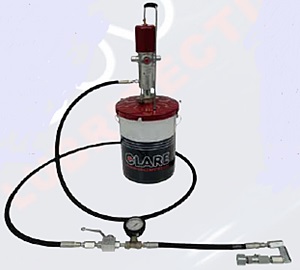 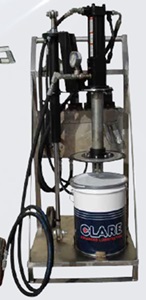
The Clare range of Valve Lubricants for the Oil & Gas Industry has been developed
in conjunction with Original Equipment Manufacturers and Production, Drilling and
Service operators.
- Valve lubricant 501 - an ‘Extended Low Temperature Range’ valve lubricant has
been developed to provide comparable performance to 601 within a temperature range
of -75°F to 250°F.
- Valve lubricant 601 - a fully synthetic lubricant, ensuring long term lubricating
and sealing qualities within a temperature range of -20°F to 350°F.
- Valve sealant 701 - If damage to the sealing surfaces is more severe, a heavy
duty sealant is required to plug the leak pathway. For these cases, RS Clare has
developed Valve Sealant 701. Better sealing performance than other products available
on the market. Full resistance to produced fluids and gases. Good lubricity – the
valve will still operate under high DP. High adhesion – will remain on sealing surfaces
& in the valve cavity. Pump using your current specification grease injection equipment
through API 6A grease injection fitting.
- Lubricant injection equipment
|
| FMC
|
Trees and Wellheads
|
|
Mokveld
|
|
|
PTC - Petroleum Technology
Company
|
PTC has a variety of
speciality tools: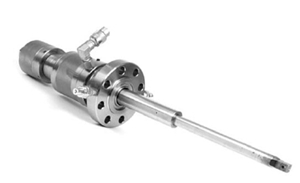
- Telescopic VR lubricators
- SealCure for damaged seal bores
|
|
MI SWACO
|
|
| Vetco-Gray
|
Trees and Wellheads
|
|
|
|
|
|
Interstate Oil & Gas Compact Commission |
This links to a very comprehensive list of all states regulations.
|
| Alabama Oil and Gas Board
|
Alabama
|
| Alaska: AOGCC
- Alaska Oil and Gas Conservation Commissions
|
Alaska regulatory agency. Link to the AOGCC report, "Investigation of Explosion and Fire at Prudhoe Bay Well A-22".
|
|
California State Lands
Commission, Mineral Resources Management Division
|
California
|
| Federal: MMS - Minerals Management Service
|
U.S. Federal
|
| Louisiana Department of Natural Resources
|
Louisiana
|
| Texas: The Railroad Commission of Texas
|
Texas
|
| Wyoming: Wyoming Oil and Gas Conservation Commission
|
Texas
|
|
Alberta, Canada Alberta
Energy Board
|
Alberta
|
|
|
|
|
|
Yahoo "Well Integrity"
Group - http://finance.groups.yahoo.com/group/Well-Integrity/
|
A Yahoo discussion group with a well integrity theme. Does not get much usage.
|
|
Wikipedia article on Well Integrity
|
It's currently pretty sparse, but could be a good place to put best practices.
|
|
Southwest Research Institute
|
Southwest Research Institute is an independent, nonprofit applied research and development
organization. The staff of 3,000 specializes in the creation and transfer of technology
in engineering and the physical sciences. The Institute occupies more than 1,200
acres in San Antonio, Texas, and provides nearly two million square feet of laboratories,
test facilities, workshops and offices.
|
|
Stress Engineering Services
|
We offer extensive design, testing, and analysis experience in both the upstream
and downstream segments of the industry in virtually all phases of operations. Services
we provide includes: Riser and Mooring Design & Analysis, Floating Production Systems,
Vessel Load / Motion Analysis, Crane Testing and Design Review, Subsea Engineering,
Field Instrumentation and Monitoring, Fitness for Service Evaluation, Tubular Testing
and Analysis, Component and Tool Design, Full-Scale Component and Systems Testing,
Coil Tubing Evaluation for Oilfield Applications, Failure and Finite Element Analysis,
Materials Engineering and Metallurgy, Forensic Engineering.
|
|
John Wright Company's
Technical Library on Blowout Control
|
An outstanding primer on well control operations
|
|
Lone Star Steel
Casing Reference
|
|
|
Bolting Info
|
|
|
ExproBase Textbooks
|
The textbooks describe basic knowledge suitable to be presented as textbooks. Each
textbook aims to give a general and practical insight into selected subject. The
reader will not become an expert by reading the textbooks, but gain improved understanding
of the subjects described and thus being able to ask more relevant questions to
the experts.
|
| iHandbood
|
Schlumberger, www.slb.com
|















 Our Surface Logger is a surface pressure gauge which displays data in real-time.
The Surface Logger operates as a memory recorder or a real-time, short-range wireless
pressure transmitter.
Our Surface Logger is a surface pressure gauge which displays data in real-time.
The Surface Logger operates as a memory recorder or a real-time, short-range wireless
pressure transmitter.
 Well sounding devices for determining fluid levels
Well sounding devices for determining fluid levels PPS 31 - Wellhead Pressure Logger The PPS31 is a wellhead digital pressure and temperature
monitoring gauge. The application of radio transmission allows operators to receive
real-time data which is also stored in the memory chip in the logger. Pressure and
temperature can also be directly read from the LCD (liquid crystal display). The
intrinsically safe design permits the logger to be used in critical environments.
PPS 31 - Wellhead Pressure Logger The PPS31 is a wellhead digital pressure and temperature
monitoring gauge. The application of radio transmission allows operators to receive
real-time data which is also stored in the memory chip in the logger. Pressure and
temperature can also be directly read from the LCD (liquid crystal display). The
intrinsically safe design permits the logger to be used in critical environments.
 Self-contained pressure and temperature recording device
Self-contained pressure and temperature recording device
 Hot Bolt Clamp: permits replacement of corroded bolts on live flanged connections.
Hot Bolt Clamp: permits replacement of corroded bolts on live flanged connections. What is ThinJack?
What is ThinJack? ThermaSet is a polymer resin system that is used to solve a variety of well integrity challenges. Typical applications include: lost circulation,
compromised wellbore integrity, plug and abandonment, and the remediation of sustained casing pressure.
ThermaSet is a polymer resin system that is used to solve a variety of well integrity challenges. Typical applications include: lost circulation,
compromised wellbore integrity, plug and abandonment, and the remediation of sustained casing pressure.


